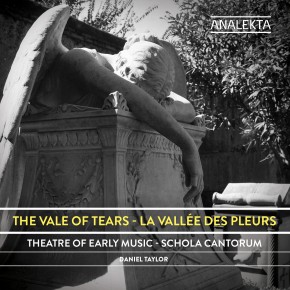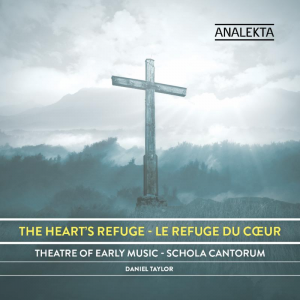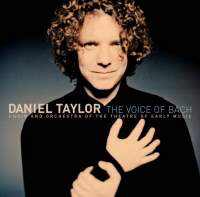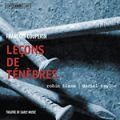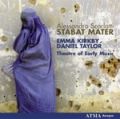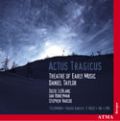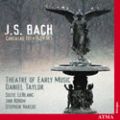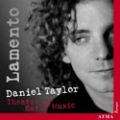| English | |||||||||||||||||||||||||||||||||||||||
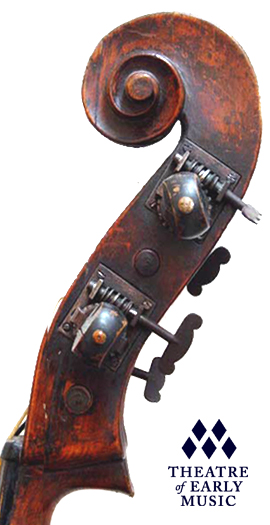 |
|||||||||||||||||||||||||||||||||||||||
| TEM À propos de nous |
Daniel Taylor | Concerts | Nouvelles | Discographie | Contactez-nous Appuyez-nous |
||||||||||||||||||||||||||||||||||
| Sony Classical | Media & Photographies |
Concerts à la carte |
Musiciens du TEM |
Artistes Invités |
Chœur du TEM | ||||||||||||||||||||||||||||||||||
Daniel Taylor et le Theatre of Early Music
| |||||||||||||||||||||||||||||||||||||||
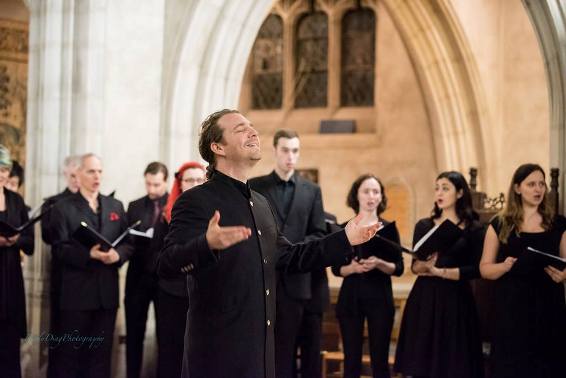 Nov 2015: Daniel Taylor et le Chœur du TEM et les étudiants de la Schola Cantorum |
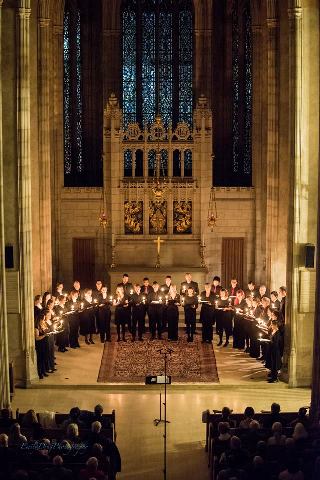 Nov 2015: Le Chœur du TEM et les étudiants de la Schola Cantorum |
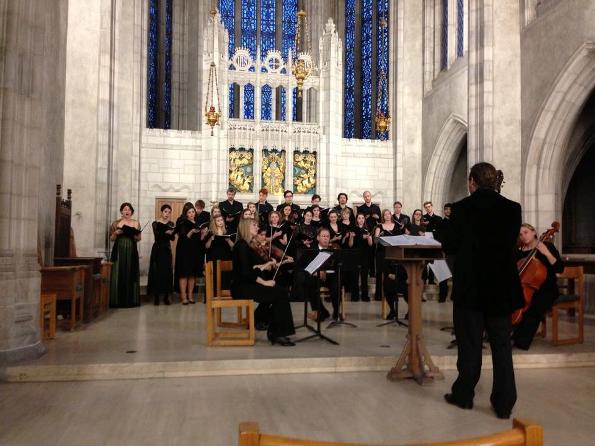 2013: l’Orchestre et Choeur du TEM dirigé par Daniel Taylor avec Schola Cantorum à Trinity Chapel, l’Université de Toronto |
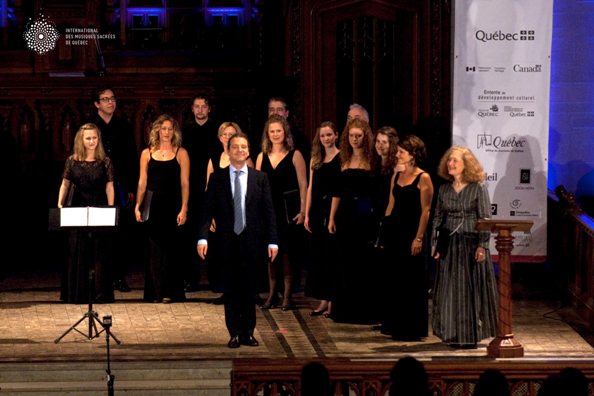 2013: Dame Emma Kirby, Daniel Taylor et le Chœur du TEM l’International des musiques sacrées de Québec.. |
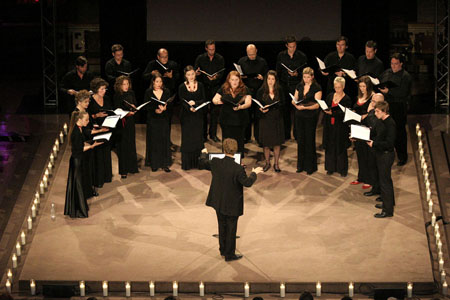 |
||
Chœur du TEM dirigé par Daniel Taylor
|
||
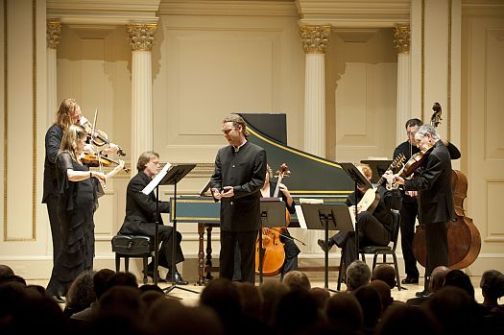 Novembre 2011 New York Weill Recital Hall, Carnegie Hall Daniel Taylor avec musiciens du Theatre of Early Music |
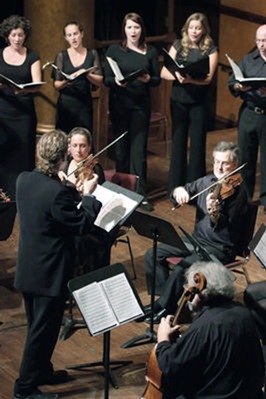 2007: l’Orchestre et choeur du Theatre of Early Music dirigé par Daniel Taylor |
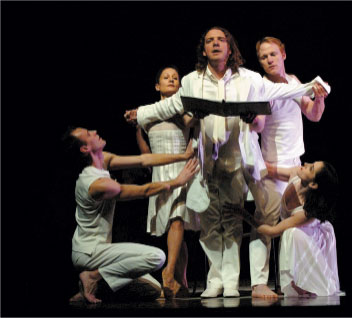
|
|
2006 : Stabat Mater de Vivaldi
|
|
Coupures de presse récentes: Haut
Haut
2018 Festival Musique et autres mondes : Revue du gala d’ouverture.
Daniel Taylor’s Theatre of Early Music performed a patrician, semi-staged version of Purcell’s Dido and Aeneas.
Ottawa mezzo-soprano Wallis Giunta was the star attraction as Dido. Taylor wisely underlined her singular energy and vocal distinctiveness:
dressing her in creamy white while keeping everyone else in black; isolating her onstage, minimizing her physical interactions with
the other singers. Instead, two contemporary dancers, the riveting Bill Coleman and Carol Prieur, served as the physical avatars for passion,
sensuality and betrayal. It was really the only approach that allowed this strange marriage to work.
Geoffrey Sirett was an enormously impressive Aeneas. Sirett adopts a less is more philosophy. His velvety, tea-stained baritone is grounded
in luxurious legato and judicious use of falsetto for expressive effect.
The rest of the ensemble was marvellous, including Larissa Koniuk’s sweetly affecting Belinda,
Benjamin Butterfield’s hilariously inappropriate drunken sailor, and Taylor’s own creepy, campy Sorcerer.
Choral movements were finely etched, with especially beautiful echo effects. The small instrumental ensemble,
led by violinist Adrian Butterfield, provided a softly shimmering backdrop for the singers.
NATASHA GAUTHIER
5 juillet 2018
http://artsfile.ca/review-music-and-beyonds-kicks-off-with-a-night-of-marvellous-musical-contrasts/
Daniel Taylor: chant choral... sur le chemin du paradis
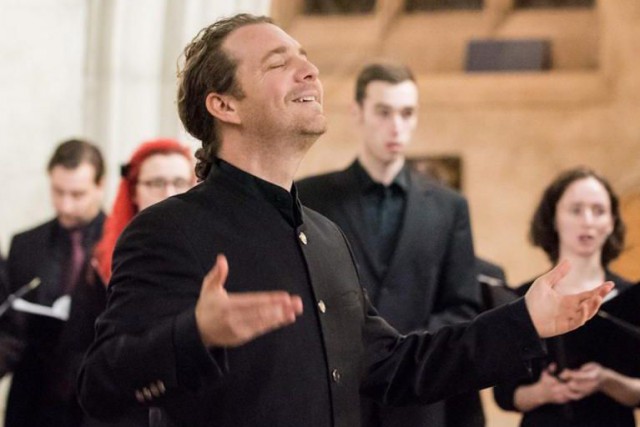
Si tant de mélomanes québécois et canadiens apprécient la tessiture du contre-ténor, c’est en grande partie grâce à Daniel Taylor.
Suave et incarnée, sa voix haut perchée nous envoûte depuis plus de deux décennies, et ce, à travers une quarantaine d’albums.
De surcroît chef de choeur rigoureux et respecté, directeur artistique inspiré, véritable leader esthétique, le chanteur canadien
est à la barre du Trinity Choir et du choeur et de l’orchestre du Theatre of Early Music (TEM). Les approches de ces formations
consistent à amalgamer les plus belles oeuvres chorales du XVesiècle à aujourd’hui, oeuvres souvent oubliées et remises en lumière...
cette fois à Montréal, où il a vécu deux décennies et où il garde un pied-à-terre - il enseigne désormais à l’Université de Toronto,
il y réside principalement pour honorer sa tâche.
Le programme de sa prestation dominicale se fonde en bonne part sur la matière tant appréciée d’un album lancé en décembre dernier
par le Trinity Choir, soit de la même famille élargie : sous étiquette Sony Classical, le sublimissime The Path to Paradise y soude
le présent et le lointain passé.
La chapelle Notre-Dame-de-Bon-Secours sera ainsi habitée par les compositeurs Arvo Pärt (1935-), John Tavener (1944-2013),
John Sheppard (1515-1558) et Willam Byrd (1540-1623), notamment. Pour Daniel Taylor et ses collègues, cette surimpression d’époques
fonctionne parfaitement, bien qu’elle mise d’abord sur une quête musicale aux XVe, XVIe et XVIIe siècles.
"Cette relation avec la musique du lointain passé, explique Daniel Taylor au bout du fil, provient de l’influence qu’exerçait
sur moi le regretté Christopher Jackson [fondateur et directeur artistique du Studio de musique ancienne de Montréal].
Je l’ai connu à ma première année d’université, nous sommes devenus amis, nous avons ensuite beaucoup voyagé ensemble.
En plus d’être un grand musicien et un grand directeur artistique, Christopher était un homme d’une profondeur exceptionnelle,
avec qui on pouvait discuter de tout : actualité, histoire, philosophie, etc. "
Cette relation de Daniel Taylor avec feu Christopher Jackson l’a également incité à intégrer l’humanité dans sa pratique artistique.
" Ce que je recherche dans le répertoire choral et dans les musiques mises en relief par les ensembles auxquels je suis associé,
c’est le facteur humain. Très ancien ou très récent, le chant peut illustrer la persécution et la souffrance, mais
aussi l’espoir et la révélation. " Daniel Taylor
C’est pourquoi, d’ailleurs, il intègre régulièrement dans ses concerts les musiques de compositeurs contemporains tels
John Tavener et Arvo Pärt, dont les concepts rythmiques sont inextricablement liés au rythme cardiaque.
Tavener et Pärt s’avérant de véritables mystiques au XXIe siècle, leur oeuvre peut fort bien se fondre dans un corpus de
musiques anciennes, dont l’inspiration était très souvent (sinon exclusivement) religieuse.
Mais il y a plus encore : "Tant de grands penseurs et concepteurs artistiques s’intéressent aux rituels, souligne
Daniel Taylor. En ce qui me concerne, ce n’est vraiment pas facile d’évoquer cette dimension rituelle dans un album de 60
minutes ou dans un concert, mais cela reste possible, je crois."
Travail de recherche
Les grandes qualités des concerts ou enregistrements de Daniel Taylor résident dans la rigueur de sa quête d’oeuvres à la
fois sublimes et obscures.
"Je fouille dans les librairies ou les bibliothèques, la liste de mes découvertes s’allonge au fil des ans, raconte-t-il.
Prenons In Monte Oliveti, d’Orlando di Lassus [1532-1594]. Je n’avais jamais entendu cette pièce magnifique avant de la découvrir
à la bibliothèque. J’ai aussi visité le mont des Oliviers en Israël. Arrivé sur place, pourtant, ce n’est pas si grandiose...
Dans le cas de cette représentation mystique, le trajet importe davantage que l’arrivée. "
Très souvent en tournée, le chanteur et directeur artistique aime diriger des ensembles dont le personnel peut varier autour
d’un noyau stable de collaborateurs.
"J’aime que les interprètes, recrutés surtout au Canada, restent frais et alertes tout en s’inscrivant dans une même
esthétique sonore. Si nous nous produisons à l’étranger, cependant, nous pouvons y accueillir une part de chanteurs issus des
pays où nous nous produisons."
La facture sonore est primordiale pour Daniel Taylor. "Pour le concept The Path to Paradise, par exemple, j’ai
recruté des ténors qui chantent particulièrement haut, ce qui confère au choeur un son d’ensemble conforme à ce qu’avaient en
tête les compositeurs du XVIe siècle figurant à notre répertoire. C’est pourquoi, d’ailleurs, on trouve dans ce choeur plus de
voix masculines que d’ordinaire. Les sopranos jouent aussi un rôle prépondérant dans l’affaire et ajoutent à la séduction.
J’ose croire que nous sommes capables de suggérer une véritable expérience et de toucher les gens."
Publié le 25 février 2018
ALAIN BRUNET La Presse
http://www.lapresse.ca/arts/musique/entrevues/201802/25/01-5155203-daniel-taylor-chant-choral-sur-le-chemin-du-paradis.php
1 Mars 2018: Une réflexion touchante sur dimanche dernier
Quand je m’évade dans la mesure
notes personnelles et discours musical de Josée Gagnon
Grande sensibilité. Clarté du geste vocal. On entend l’espace qui s’ouvre.
Une acuité joyeuse coule à travers les sens. On perçoit tout, sons et silences. L’esprit
se calme. La posture change. Dans cette qualité d’écoute, chacune des voix se révèle
dans son infinie justesse. Chacune livrant sa couleur propre et essentielle à l’équilibre
de l’ensemble. L’oreille capte les sons feutrés qui cèdent bientôt à la tempête d’un
crescendo flamboyant. Le volume sonore nous pénètre sans jamais écraser. Il nous
enveloppe, il nous tient en alerte. Comme une arrivée au sommet, au terme d’une
longue ascension, quand le coeur respire et s’apaise, absorbé par l’étendue du vide,
ébloui devant la beauté de l’espace, à perte de vue, à pleine oreille.
Le chef de choeur inspire à cette synergie créatrice. Il l’invite à travers ses gestes. Il
s’en nourrit et la provoque tout à la fois. Il conduit les voix et notre écoute dans un
même mouvement de perfection. Il révèle l’expression juste de l’oeuvre à ce moment-ci,
dans cette salle, avec ce public. Dans cette pression atmosphérique et cette humidité
de fin février, il offre la texture parfaite pour cet espace acoustique exceptionnel. Dans
la pure magie de cette rencontre, chaque membre de l’auditoire devient complice des
oeuvrent qui se créent ce soir-là. Dans la vague du son et de l’écoute, les émotions
dansent, toutes personnelles, intimes mais reliées tout autant.
Assise droite sur mon banc de bois au fond de l’église, je m’intéresse un bon moment
aux gestes du chef, Daniel Taylor. J’observe ce dos et ces mains qui scandent le
mouvement. Je les suis des yeux un long moment. C’est calme, précis, entier. Je
m’évade dans la mesure. J’entre dans la partition. Je navigue dans la mouvance des
voix qui libèrent leur arsenal de grandeur et de beauté.
Et la dernière pièce s’achève. Le rappel se termine. Les voix touchent le silence. Les
musiciens se tournent. Saluts. Applaudissements. Le public se lève. Rituel. Transition.
Ça bouge, ça parle. Chacun, chacune revêtit le manteau de sa vie et retourne pas à
pas dans la ville. Un dimanche soir à Montréal. La ville au cent clochers. La ville aux
mille festivals.
Je rentre chez moi. J’écris ces lignes. Comme un besoin de transmettre comment l’art
existe. Comment il transforme et anime femmes, hommes et enfants qui le vivent, le
créent, le ressentent, l’accueillent. Et parce que l’art existe, peut-être que l’humanité a
encore une chance.
Ces notes ont été écrites à la sortie du spectacle de musique THE PATH TO PARADISE,
de Daniel Taylor et le Theatre of Early Music, présenté à la Chapelle Notre-Dame-de-Bon-Secours,
dans le Vieux-Montréal, le 25 février 2018, dans le cadre du Festival Montréal en Lumière
Juno Nomination pour "Tree of Life",
Trinity Choir avec Daniel Taylor!
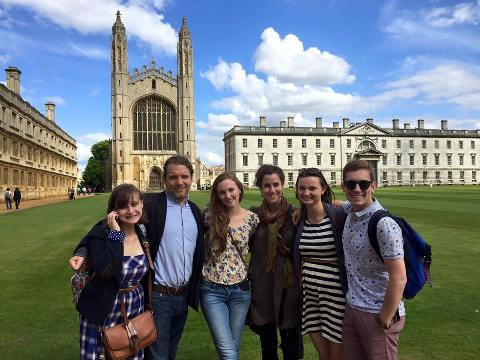
Février 2018:
Félicitations pour votre nomination à un prix Juno
à Daniel Taylor et aux chanteurs du Trinity Choir,
y compris certaines des jeunes étoiles (de gauche à droite):
Bronwyn Thies-Thompson, Rebecca Genge, Ellen McAteer,
Emma Hannan et Ryan Patrick McDonald de l’Université de Toronto
Voici la liste des nominations aux prix Juno pour 2018 :
Classical Album of the Year: Vocal or Choral Performance :
1. The Tree of Life, Daniel Taylor with The Trinity Choir
2. Crazy Girl Crazy, Barbara Hannigan with Ludwig Orchestra
3. Aeterna: Mother of Light: Isabel Bayrakdarian with Coro Vox
4. Schubert Sessions: Lieder with Guitar, Philippe Sly & John Charles Britton
5. In the Stream of Life: Songs by Sibelius, Gerald Finley with Bergen Philharmonic Orchestra
2018 Gagnant : Crazy Girl Crazy, Barbara Hannigan with Ludwig Orchestra
Fall Baroque Academy : Giulio Cesare (Highlights) Review
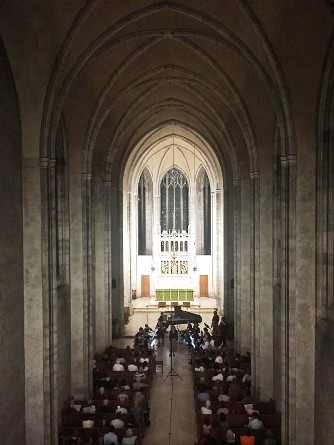
On an unseasonably hot September night, in an exquisite Gothic Revival chapel, an irrepressible 18th century composer sent the collective
enthusiasm of early music students soaring last Sunday, singers and instrumentalists spirited partners in a courageous concert of
daring proportions. Highlighting excerpts from George Frideric Handel’s dazzling 1724 operatic masterpiece, Giulio Cesare,
the University of Toronto Faculty of Music’s Fall Baroque Academy provided ample occasions for emerging artists to shine......
Trinity College Chapel rang with passion.
Supported by an unfailingly buoyant 12-player student ensemble, augmented by a handful of imported professionals,
sensitively conducted from the ranks by guest Music Director Jeanne Lamon, the 14 members of founder Daniel
Taylor’s remarkable Schola Cantorum took command of 11 distinct arias. Primarily featured as soloists,
occasionally in duets, singers provided context, each precising moments of salient libretto, Giulio Cesare play by play.
Asked about his perception of his role as Head of Historical Performance in a brief one-on-one post concert conversation,
a smiling Maestro Taylor said simply, "not to educate the feeling and creativity away."
Judging from the boundless energy and tireless commitment of his students, he and his Academy colleagues
must surely be overjoyed by the scope of their success. The capacity audience in attendance at Trinity College most certainly was.
Posted on September, 2017 by Ian Ritchie, Opera Going Toronto
Complete review: http://operagoto.com/fall-baroque-academy-giulio-cesare-highlights-review/
Magnificat Review
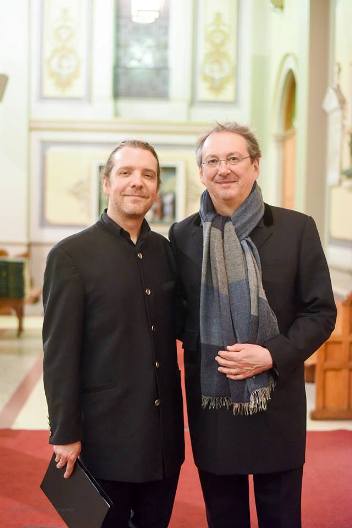
Sometime in the early 1600s.......German composer and organist Hieronymus Praetorius wrote his Magnificat V,
one in a series of Magnificat settings for multiple voices all arranged in towering polyphony. Almost 400 years later,
contemporary Estonian symphonist Arvo Pärt blended the intricate Renaissance form with elements of Gregorian chant and
Russian Orthodox harmony to create a uniquely reshaped Magnificat, stark, solemn, strikingly reverent.
What surprises is not so much the breadth of the historical gulf separating the two works, but the depth of resonance that
unites them, a shared sense of acute spirituality expressed in vivid human overtones.
Presenting both pieces, the first foreshadowing the second, internationally acclaimed period virtuosi,
the Tallis Scholars, led by Peter Phillips launched a dazzling evening of sacred music at St. Paul’s Basilica on Saturday.
A vibrant choral sampler, the lush offerings essentially reflected parallel modes of expression over the centuries revealed in
four distinct Christian texts.
Alternating with Phillips as conductor, University of Toronto Head of Historical Performance, renowned countertenor
Daniel Taylor, joined by artists of the Choir of the Theatre of Early Music augmented and expanded the repertoire in
a glorious demonstration of exquisitely detailed programming.
More finely filigreed singing was much in evidence post intermission with four variants of Ave Maria, the first performed in a
single appearance by members of U of T Faculty of Music’s Schola Cantorum led by Taylor. Theatrically assembled in two ranks
flanking St. Paul’s great domed Victorian nave, the visibly excited cohort of student choristers gave rich balanced voice to
a heartfelt rendition of the hallowed plea written by an anonymous author.
The Nunc Dimittis, an exultant proclamation of the birth of the Infant Jesus, concluded the evening in historically varied guise.
A quasi madrigal written in glowing counterpoint by Orlando Gibbons. A short work by Spanish polyphonist Andrés de Torrentes.
A spectacular swelling iteration for double choir by the brilliant 20th century orchestral colourist, Gustav Holst.
The Tallis Scholars ended as magnificently as they had begun, utterly triumphant, gifting us with Claudio Monteverdi’s
irrepressibly joyful motet, Cantate Domino by way of an encore.
This was a concert of extraordinary dimensions, a spine tingling leap across time, astutely curated,
superbly sung, stirring and intense. In this, the holiest season in the Christian calendar, Phillips,
Taylor and artists remind us that music like faith can be powerfully transformative.
Publié par Ian Ritchie, Opera Going Toronto, Mars 2017
Revue de concert originale: http://operagoto.com/category/review/
Tallis Scholars & friends: Magnificat
Tonight felt like a kind of affirmation of permanence in the face of change and disorder in the world.
The Tallis Scholars, conducted by Peter Phillips, joined forces with two University of Toronto ensembles,
Schola Cantorum and Theatre of Early Music, conducted by Daniel Taylor. While the repertoire ranged from the renaissance to our own century,
we were listening to unaccompanied choral music, using religious texts: Magnificat, Pater noster, Ave Maria and Nunc Dimittis,
all in multiple settings.
St Paul’s Basilica at Queen & Power was packed with eager listeners, attracted no doubt by Tallis Scholars’ wonderful discography,
but also perhaps aware of the new kids in town, Taylor’s two ensembles that shared the program and are now also recording for SONY.
The acoustic plus the visuals are a dream come true for musicians presenting this kind of program.
For a few of the pieces we saw the combined forces, as in Praetorius’ Magnificat V to begin or Holst’s Ninc Dimittis to close the program.
......the singing is very direct and without excess vibrato (as you’d find in styles from later periods). The notes,
especially the ones sung way up high are totally exposed, and requiring nothing less than perfection of intonation.
I shall investigate further: through the magic of recordings.
Publié mars, 2017 par Barczablog
Revue de concert originale: https://barczablog.com/2017/03/
Nomination au prix Juno pour
Four Thousand Winter, The Trinity Choir avec Daniel Taylor

7 février 2017: Daniel Taylor écrit:
" Un cri à mes chanteurs du Trinity Choir
(y compris certaines des jeunes étoiles (de gauche à droite):
Bronwyn Thies-Thompson, Rebecca Genge, Ellen McAteer,
Emma Hannan et Ryan Patrick McDonald de l’Université de Toronto)
pour la nomination Juno! "
Voici la liste des nominations aux prix Juno pour 2017 :
Classical Album of the Year: Vocal or Choral Performance :
Bach: Magnificat BWV 243, Arion Baroque Orchestre, Alexandre Weimann
Four Thousand Winter, The Trinity Choir, Daniel Taylor
L’Aiglon, Orchestre Symphonique de Montréal, Kent Nagano
Dark Star Requiem, Tapestry Opera, Gryphon Trio, Elmer Iseler Singers
Handel Messiah, Toronto Symphony Orchestra, Toronto Mendelssohn Choir, Sir Andrew Davis
2017 Juno Winner : L’Aiglon, Orchestre Symphonique de Montréal, Kent Nagano
Trois Revues de Le couronnement du roi George II
Présentation de Toronto Summer Music
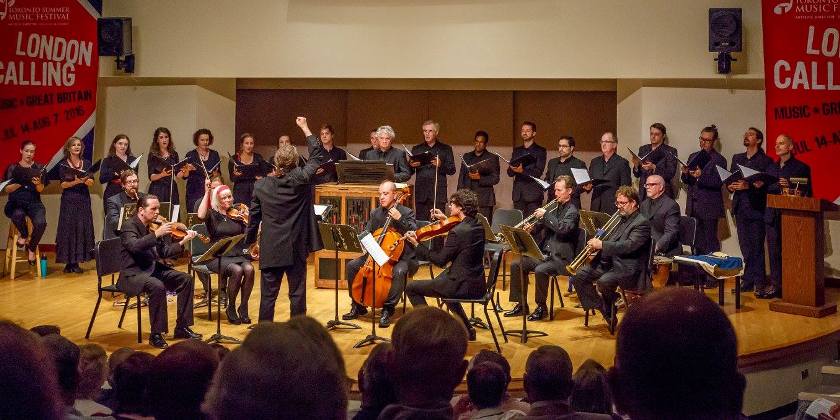
This was the most fun I’ve had at a concert since the epic minimalist concert ...in August 2013.
Then as now I believe we were seeing Toronto Summer Music Artistic Director Douglas McNabney
pushing the envelope of what’s possible in a concert.....But this time I believe we were engaging in genuine research, Daniel Taylor’s Theatre of Early Music
(TEM) challenging us to see and hear in a new way. .....
.......I loved this concert that ventured into different
territory beyond performance. We were re-enacting a public ritual from long ago, and I say "we" because the
audience weren’t merely passive viewers. Whether it was McNabney or conductor Daniel Taylor who conceived & curated this event,
they changed the usual ground-rules for a concert.
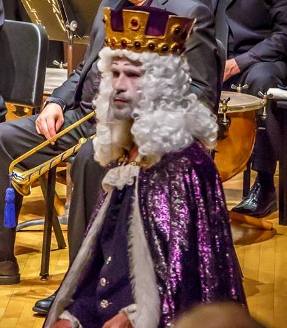 The evening was organized into a service: re-enacting a coronation, with a few modern pieces added.
Bill Coleman silently portrayed King George II, while Alan Gallichan played the Archbishop.
During Zadok the Priest, in the long gradual build-up of tension, we saw the Bishop put a crown upon
the King’s head, and then the two advanced towards us (the congregation?), leading to the shattering climax
as the chorus came in. The orchestra was a nice size to work with that fabulous chorus,
comprised of a string quartet, two oboes, two trumpets, drums and organ.
The evening was organized into a service: re-enacting a coronation, with a few modern pieces added.
Bill Coleman silently portrayed King George II, while Alan Gallichan played the Archbishop.
During Zadok the Priest, in the long gradual build-up of tension, we saw the Bishop put a crown upon
the King’s head, and then the two advanced towards us (the congregation?), leading to the shattering climax
as the chorus came in. The orchestra was a nice size to work with that fabulous chorus,
comprised of a string quartet, two oboes, two trumpets, drums and organ.
This wasn’t any old chorus, as Taylor looked out upon a small ensemble of some of the best
singers in the city, namely the Theatre of Early Music (TEM). The magnificent chorus included Ellen McAteer
(fresh from Friday night’s Rape of Lucretia) Asitha Tennekoon (heard in Tapestry Opera’s Rocking Horse Winner),
Alex Dobson, and Toronto Masque Theatre’s Larry Beckwith.......
I was struck by the sentiments stirred up at this concert. We heard wonderful music including "Worthy Is the Lamb",
but also participated in singing Parry’s "Jerusalem", admittedly an anachronism that served to personalize the event.
I wonder, would the crowd in the 18th Century have cried out "God Save the King" along with the chorus in "Zadok the Priest"?
Listening to this performance, I have to wonder. .... But notice that it’s
not wrong to be sentimental, not in this case. This isn’t a piece of art, it’s a practical composition for an event, intended
to stir up our feelings. When they sing "Alleluia" ....it’s a genuine prayer, not just a bit of singing....
...It’s a coronation anthem meant for an event like what we saw re-enacted tonight....Wow!

Publié le 27 juillet, 2016 par Barczablog
Revue de concert originale: https://barczablog.com/2016/07/27/the-coronation-of-king-george-ii/
The Coronation Of King George II
On October 11, 1727, George II, was crowned King of England. His journey to the throne had been a rough ride. His father, George I, Elector of Hanover, imported by an opportunistic Parliament to quell the threat of a dreaded Catholic succession, had prided himself on his singular disinterest in the political and cultural affairs of his adopted nation. His son, clever and artistic, bristled at the unpopular monarch’s entrenched philistinism to the point of estrangement. When, at long last, the disagreeable old king died, George II leapt at the chance to publicly commit to the customs and values of his newly inherited realm.
George Frideric Handel, another German-born expatriate, inveterate impresario, London showman par excellence, was hired to produce and direct the coronation. It would be a royal smash hit, an 18th century blockbuster, a spectacular, supremely theatrical show of Englishness.
Sounding a regal note to the Toronto Summer Music Festival’s celebration of British music, the Choir and Orchestra of the Theatre of Early Music conducted by the ensemble’s artistic director, Daniel Taylor, thrilled earlier this week with their sweeping, unbounded concert wryly entitled, The Coronation of King George II.
Parted by the turbulent passage of almost three centuries from the reality of the quintessential Georgian monarch’s legendary inauguration, no musicologist, however determined, can likely ever reconstruct the actual fabric of the ceremony given the jumbled fragments of existing unset texts. The Chapel Royal as Handel knew it, final arbiter and preserver of English court music, has been repeatedly gutted by domestic hostilities and war, its archives savaged.
Less authentic period statement than a summoning of the idea of coronation, Taylor, singers and musicians wisely sketched the past with broad strokes during the course of their recreation, emphasizing not so much a particular moment in time and place as a continuum, an artful witnessing of an entire history of orchestral and choral pageantry, Renaissance to Baroque to present-day. Rousing, gripping, frequently uplifting, the experience both charmed and enthralled, blending Gibbons and Palestrina, Purcell and Handel with pieces composed, in the case of Hubert Parry and John Tavener, 200 – 300 years after the momentous gala in Westminster Abbey. Handel may not have programmed each and every one of Taylor’s selections but he would surely have approved.
On a summer soft evening at U of T, the Faculty of Music’s Walter Hall sparkled, ringing with trumpets, soaring with organ, bright and luminous with song.
Eighteen voices strong, choristers processed in stately file through the auditorium, opening from the rear of house, lining opposing side aisles at the concert’s midway point. Surround sound effects abounded, unexpectedly visceral and dramatic. Interspersed with well-known vocalists plucked from the ranks of the Toronto opera community — Ellen McAteer, Asitha Tennekoon, Alex Dobson, Cairan Ryan — the purpose assembled choir touched the heart with its exquisite blend of warmth and passion.
Setting the tone for the evening’s instrumental proceedings, Parry’s I was Glad still ringing through the hall, period oboes, organ and strings... quickly merged into a delightfully no-nonsense Overture and March from Handel’s Ode to St. Cecilia’s Day. Moving through the attentive audience to join the Theatre of Early Music’s refreshingly uninhibited players on stage, chorus and orchestra assembled for the great, swelling coronation anthem, The King Shall Rejoice, Taylor leading with great charisma and exuberance.
A very tangible, physical sense of occasion held sway throughout the exquisitely intense 1-hour performance that followed heightened, in no small measure, by the robed presence of Rev. Alan Gallichan of Christ Church Cathedral, Ottawa, assuming the role of Archbishop of Canterbury. Startling, exuding an air of pronounced drama, costumed actor Bill Coleman, commanded attention as the King in faux white lead make-up and full wig.
As solemn as it was joyful, the scope of imagination and invention underlying this impossibly fanciful, utterly engaging Coronation of King George II was nothing less than extraordinary, a dream of monarchy set to magical music. Gibbons’ Drop, Drop Slow Tears, ethereal and a cappella, mesmerized. The stark beauty of Purcell’s Hear My Prayer, O Lord haunted. Parry’s mighty hymn, Jerusalem, a towering classic shaped into a potent communal encounter by Taylor, inspired and moved, a great plainspoken cry of hope and joy sung by audience and choristers alike.
Then suddenly it was over, Handel’s iconic Zadok the Priest potent and resonant as it should be, Worthy the Lamb from Messiah concluding the all-too-brief program. “God save the King!”, cried the Archbishop. “God save the King!”, we echoed.
A stirring concert, a visionary offering. A glorious crowning touch to a fine 2016 Festival.
- Ian Ritchie, Opera going Toronto, July 2016
Crowning George II
For the occasion Mr. Taylor had assembled a small band of strings, trumpets, oboes and drums and both a chamber organ and the
newly repaired organ of Walter Hall were brought into play. There was a choir of twenty including some pretty classy singers.
Good use was made of the space to create different effects. Parry’s I Was Glad was sung with the choir in the back corners of the hall
with the organ at stage right. Later on Tavener’s Hymn to the Mother of God was sung by the choir split down the sides of auditorium.
This was highly effective and it made the most of a very beautiful piece; for me the musical highlight of the night.
There were fanfares from suitably wonky period trumpets and drum rolls and lots of liturgical call and response of the "We are miserable sinners O Lord " , "Yes we are really miserable "
variety.
Then there was Handel; Zadok the Priest and The King Shall Rejoice (natch) and Purcell (Remember Not, Lord and Hear My Prayer,
O Lord and Gibbons (Drop, Drop Slow Tears) and Palestrina (Jesu, Rex Admirabilis) all sung very beautifully a capella.
The "congregation " (us) got to belt out Jerusalem before the choir kicked in with Zadok for the actual coronation
followed by lots of "Long live the king! "s and a final blast of Worthy is the Lamb and the Amen from Messiah.
Somehow it struck the right balance between gravity and levity and a good time was had by all.
John's Opera Ramblings, July 2016
La Vallée des Pleurs / The Vale of Tears
Le dernier disque récital du TEM et Schola Cantorum sous étiquette Analekta.
|
|
La Vallée des Pleurs / The Vale of Tears1. Praetorius: "Hört auf mit Weinen und Klagen"Schütz: Musikalische Exequien, Op. 7 2. Concerto in the form of a German Requiem Mass 3. Motet: "Herr, wenn ich nur dich habe" 4. Canticle of B. Simeonis: "Herr, nun lässest Du Deinen Diener" 5. Praetorius: "Mit Fried und Freud ich fahr dahin" J.S. Bach: O heilige Geist- und Wasserbad, Cantata BWV 165 6. Aria (soprano): "O heilige Geist- und Wasserbad" 7. Recit. (bass): "Die sündige Geburt verdammter Adamserben" 8. Aria (alto): "Jesu, der aus großer Liebe" 9. Recit. (bass): "Ich habe ja, mein Seelenbräutigam" 10. Aria (tenor): "Jesu, meines Todes Tod" 11. Chorale: "Sein Wort, sein Tauf, sein Nachtmahl" Schola Cantorum et le The Theatre of Early Music: Daniel Taylor, Chef |
La Scena Musicale, Montréal, Novembre 2015
"De toute évidence, Daniel Taylor adore la voix humaine. Le choix méticuleux des chanteurs qui
l’entourent est admirable. Il apporte à ces merveilles vocales une direction sensible, un sens
musical empreint d’une profondeur indéniable. Cette vallée des pleurs se transforme en
rivière dont la coulée atteint son but, près d’un siècle plus tard, avec la cantate BWV 165 de Bach.
La cantate, axée sur le baptême du croyant, se termine sur une exécution limpide et pure,
sans doute la plus belle interprétation de cette œuvre discrète du grand Bach.
Un disque essentiel que l’on garde près de son cœur. "
Theatre of Early Music, Schola Cantorum, Dan Taylor, The Vale of Tears
Article posted on CBC web site by Robert Rowat - Sept 2015
On the heels of their Juno-nominated 2014 album The Heart's Refuge, the Theatre of Early Music, Schola Cantorum and
director Daniel Taylor are back with another exciting release on the Analekta label, The Vale of Tears.
The Theatre of Early Music is Taylor’s collective of early music specialists committed to reconstructing music for historical events,
and that’s exactly what we have in The Vale of Tears. Here, the event in question is a funeral for Heinrich Posthumous Reuß,
a member of the noble class in Dresden where another Heinrich, Schütz, was Kapellmeister.
Schütz composed his Musikalische Exequien in 1635 to honour Reuß, and it is has endured as his most famous work.
It’s complemented on The Vale of Tears by J.S. Bach’s cantata O heilige Geist- und Wasserbad, which draws on some of the same texts and
chorale sources as Schütz’s work and two hymns by Michael Praetorius that were performed at Reuß’s burial service.
It’s a substantial choral program for Schola Cantorum, a vocal ensemble comprised of students from the Univeristy of Toronto’s faculty of music, where Taylor is head of historical performance.
But in the few years since he established the group, it has blossomed into a virtuosic choir capable of tackling the most challenging baroque repertoire.
We reached Taylor by email to find about more about his most recent project.
Music from the early baroque period doesn’t get as much attention as music from the high baroque. Why is that?
It could be said that, aside from Monteverdi, many of the composers from the early baroque period have been neglected. Perhaps until recently, ensembles have not taken risks in their programming, so often it’s Fireworks or the Brandenburgs, in part because of the reduced funding provided by the federal government to the arts.
The Theatre of Early Music made its first effort to remedy that with our Juno-nominated album dedicated to early German composers including Kuhnau and J.C. Bach. Kuhnau was a composer I first brought to the Quebec and Canadian public thanks to Christopher Jackson’s invitation to direct the Choir of the Studio de musique ancienne de Montréal.
In many ways, Christopher proved to be a mentor and inspiration to me and my work that would follow. It’s encouraging to see groups such as Arion now programming Kuhnau, it is a compliment to my musicians and to their dedication as well as to Christopher’s unerring commitment to early music.
This album gives us a faithful representation of the kind of music we’d hear at a solemn occasion in 17th-century Germany. Does this sort of historic immersion drive your projects with the Theatre of Early Music?
Absolutely. My interest in liturgical reconstructions is driven by my belief that the art itself is already perfect in form; this, to be clear, this is not about having a
"brand name" or leaving my own fingerprints all over the scores, but in allowing the original beauty of the work to be shown.
It must be like the feeling of revelation that they had when they restored the frescoes of the Sistine Chapel, this is very much a sacred process guided by the musicians.
You’ve been directing U of T’s Schola Cantorum for three years now. What are the challenges you face making music at a professional level with a student ensemble?
There is a moment that I usually wait for in each rehearsal, that moment during which I see the students singing with joy (priority number 1!) suddenly realize that I am going to make very specific professional artistic demands of them, they are, after all (as one of the reviewers noted recently) an ensemble of the elite singers in this country, and with opportunity comes tremendous discipline and very, very hard work.
Their first concert was with the greatest choir in the world, the Tallis Scholars, and since then they have appeared with members of the Monteverdi Choir, the Gabrieli Consort and the Kammerchor Stuttgart. Combined with the rich array of courses offered through the University of Toronto’s choral program developed by Dr. Hilary Apfelstadt, our program is unrivaled in Canada.
Tell us what the recording sessions were like.
Recording sessions were intense and yet the singers and I found them to be greatly rewarding. For some of these young people,
this was their first professional recording yet instead of hearing doubt or hesitation, you can hear their excitement.
To be sure, the Musikalische Exequien is a complex piece and there were certainly times when I asked myself why I had set such a monumental
task before all of us. However, they answered this challenge by lifting the music to a higher level.
Le Refuge du cœur / The Heart's Refuge - Nomination au prix Juno !
26 janvier 2015: Daniel Taylor écrit:
" Quel accomplissement pour nos étudiants du département de musique ancienne à l’Université de Toronto Faculté de musique en partenariat avec le Chœur et Orchestre du Theatre of Early Music! "
Voici la liste des nominations aux prix Juno pour 2015 :
CLASSICAL ALBUM OF THE YEAR: VOCAL OR CHORAL PERFORMANCE:
Schubert: Winterreise Gerald Finley & Julius Drake (Hyperion) GAGNANT POUR 2015
Handel & Porpora: The London Years Julie Boulianne, Clavecin en concert & Luc Beauséjour (Analekta)
Mozart: Opera & Concert Arias Karina Gauvin, Les Violons du Roy & Bernard Labadie (Audiogram)
Terra Tremuit Studio de musique ancienne de Montréal (ATMA)
The Heart's Refuge Theatre of Early Music, Schola Cantorum & Daniel Taylor (Analekta)
Pour voir tous les prix Juno pour 2015, veuillez cliquer ici: les prix Juno pour 2015
|
|
Le Refuge du cœur / The Heart’s Refuge1. Buxtehude, Dietrich (1637 - 1707)Jesu, meines Lebens, BuxWV 62 (Aria) 2. Bach, Johann Cristoph (1642 - 1703) Es ist nun aus mit menem Leben (Aria) 3. Schmelzer, Johann Heinrich (1680) Harmonia a 5 4. Kuhnau, Johann (1660 - 1722) Gott, sei mir gnädig nach diener 5. Bruhns, Nicolaus (1665 - 1697) Ich Liege und schlafe mit Frieden Schola Cantorum et le Theatre of Early Music: Daniel Taylor, Chef |
Voici quelques critiques
Dripping with beauty and style, they establish their seriousness from the off - Buxtehude's passacaglia meditating on
Christ's sacrifice and continue it through Johann Christoph Bach's aching strophic death aria.
The choir shows its youth in a light and pleasing sound. This snapshot of 17th-century German sacred music is a heartwarming and worthy one.
Gramophone février 2015
Que l’on soit ou non croyant, c’est toujours avec une attitude de profond recueillement que nous nous abandonnons
à l’écoute de la musique des maîtres germaniques de l’époque Baroque. Avec un nouvel album au catalogue d’ANALEKTA,
intitulé Le Refuge du cœur, les ensembles Theatre of Early Music (TEM) et Schola Cantorum, sous la direction du chef
(et contre-ténor parmi les plus en demande à travers le monde), Daniel Taylor, nous plongent encore un peu plus
profondément à l’intérieur du cœur et de l’âme des contemporains d’une époque parmi les plus tourmentées de l’histoire,
celle de la Guerre de 30 ans (XVIIe siècle). Fidèle à sa mission de faire redécouvrir les musiques anciennes,
le TEM ainsi que son fondateur et directeur artistique, Daniel Taylor, dévoilent ici des cantates magnifiques de
5 compositeurs allemands de l’époque baroque, tous réunis dans un même album. Dietrich Buxtehude (1637 - 1707),
Johann Christoph Bach (1642 - 1703), Johann Heinrich Schmelzer (1623 - 1680), Johann Kuhnau (1660 - 1722) et Nicolaus Bruhns (1665 - 1697).
La plupart en langue allemande, ces cantates furent remaniées à partir des formes initialement mises sur pied et sans
cesse renouvelées par les grands maîtres italiens du Baroque, quelques décennies auparavant. Le style distinctif de
l’ensemble, joint à l’expertise et l’enthousiasme de Taylor, mènent à des lectures captivantes et authentiques de ces œuvres,
témoignages musicaux des agonies, des tourments, mais également, des consolations de ce siècle déchiré par la
répression et les conflits internes.
C’est un bond dans le temps de 4 siècles que nous proposent ici les musiciens du TEM et leur chef.
Entre 1618 et 1648, une série de conflits dévastateurs déciment la moitié de la population du continent européen.
Si les croyants trouvent refuge en leur foi et en leur espérance en un monde meilleur, les compositeurs de l’époque
trouvent là une source intarissable d’inspiration. Au cours du XVIIe siècle, les musiciens luthériens vont constituer
un magnifique répertoire de musique sacrée. Les textes mettent en valeur le message du Christ de façon originale et variée.
La mort et la délivrance; la souffrance de Jésus; le désarroi de l’âme sont illustrés par d’ingénieux procédés d’imagerie musicale :
un motif inexorablement répété pour marteler le message dans l’esprit du croyant ; des mélodies très sobres dans une
harmonisation raffinée pour créer un profond sentiment de paix; une succession rapide de contrastes; des voix qui
passent du soprano à la basse successivement pour évoquer la descente au tombeau..
Tout cela traduit bien la charge émotive qui habitait ces créateurs face aux affres de la guerre et de la destruction.
Devenu un organisme sans but lucratif en 2002, le TEM se donne pour mission de faire rayonner la musique ancienne dans
toute sa splendeur, en remettant au goût du jour ses pratiques musicales et la sonorité de ses instruments.
Les excellents musiciens de l’ensemble diffusent et partagent leur passion grâce aussi, à des invités prestigieux
(Nancy Argenta, Robin Blaze, James Bowman, Benjamin Butterfield, Michael Chance, Charles Daniels, Alexander Dobson,
Karina Gauvin, James Gilchrist, Michael George, Peter Harvey, Dame Emma Kirkby, Suzie LeBlanc, Daniel Lichti,
Carolyn Sampson, Michiel Schrey, Stephen Varcoe et Deborah York) et par le biais de tournées à l’échelle nationale
et internationale (France, en Argentine, au Brésil, en Angleterre et en Chine notamment). Sous la baguette du chef,
les choristes d’élite de la Schola Cantorum de l’Université de Toronto, des étudiants de tous niveaux, animés
eux aussi par l’ardent désir de faire connaître la musique ancienne dans sa mouture originale, se joignent au TEM,
pour nous offrir une brillante et authentique prestation. Un peu comme lorsque l’on restaure une œuvre d’un grand
maître pour qu’elle retrouve tout son lustre à nos yeux, Daniel Taylor et les musiciens du TEM font un travail
minutieux pour rendre à ces œuvres toute leur dimension à la fois humaine et historique.
Écouter cet album,
c’est un peu comme redécouvrir un monde ancien sous un jour nouveau.
Marie-Josée Boucher : info-culture.biz
Le baroque allemand du 17e siècle est souvent synonyme d’austérité. La musique était avant tout
destinée à la ferveur religieuse. Encore en développement, elle trouva, une génération plus tard,
un certain J.S.Bach qui l’amènera à un niveau supérieur. Pourtant, de cette apparente facilité,
de ces couleurs sombres et intériorisées, il y a ici une magnifique invitation à la beauté du moment présent.
Baigné d’une douceur incomparable, tant dans la prise de son que dans la déclamation des chœurs,
ce disque fait l’effet d’une consolation entière. La cantate "C’en est maintenant fini de ma vie" de J.Chr.Bach
(un cousin du père de Bach) est d’une simplicité désarmante, subtilement harmonisée.
Ces strophes répétées inlassablement dans le silence, comme des mantras, produisent chez l’auditeur
un abandon total, une paix résignée. Les paroles "Welt, gute nacht" (Monde, bonne nuit) presque
chuchotées dans la pénombre, possèdent quelque chose de sublime et d’émouvant.
En cela, il faut souligner le travail méticuleux et sensible de Daniel Taylor. Grand chantre lui-même, dévoué à l’art vocal,
il a amené son ensemble tout près des textes liturgiques. De cette proximité, l’auditeur moderne y trouvera sûrement
un sens qui lui fera le plus grand Le baroque allemand du 17e siècle est souvent synonyme d’austérité.
La musique était avant tout destinée à la ferveur religieuse. Encore en développement bien.
http://leparnassemusical.com/2014/09/10/the-hearts-refuge-theater-of-early-music-schola-cantorum-daniel-taylor-2/
The most recent recording of the Theatre of Early Music (TEM) and the Schola Cantorum entitled The refuge of heart,
published by Analekta, offers images of peace and serenity like many pearls on a unlikely necklace.
Of course, great baroque music is made up of a large and varied repertoire and perhaps we should not be surprised
to hear such beautiful interpretations. But what sets this album apart from many others is the care taken by the
conductor and artistic director of the Theatre of Early Music Daniel Taylor and his research and selection of composers and works.
This may be first time on one recording that the well-known figures of Dietrich Buxtehude and Johann Christoph Bach
(cousin of the father of Johann Sebastian Bach) are paired with rare compositions by lesser-known composers Johann Kuhnau,
Johann Heinrich Schmelzer and Nicolaus Bruhns.
The purity and depth of what is offered to the listener is made even better by the impressive cast of soloists:
the mezzo-soprano Rebecca Claborn, countertenor Kyle Guilfoyle, tenor Isaiah Bell and bass Alexander Dobson deliver
inspired performances and the impression of a contagious spirituality.
In perfect harmony with the chorus and soloists, musicians of the TEM show guided restraint required
for this type of repertoire in which the voice and text must occupy the largest share of the listeners focus -
the particular sound of old instruments is offered here in all its flavour. The thoughtful, unhurried work
immediately transports us elsewhere and for quite sometime. Such music, such purity!
Thank you Mr. Taylor!
www.pieuvre.ca
2014-2010  Haut
Haut
-
Heavy and happy is the music that crowns a king
PETER ROBB, Ottawa Citizen
26 Novembre 2014
Since the coronation of William the Conqueror at Westminster Abbey in 1066, every British monarch has been crowned in a service full of glorious music. Ottawa-native counter tenor Daniel Taylor tells Peter Robb a little bit about the service and a performance of the music he is delivering on Dec. 3.
Q. What an interesting project. Where/when did the idea germinate?
A. The coronation of the Queen took place 60 years ago on June 2, 1953, when Queen Elizabeth II was crowned at Westminster Abbey. The Diamond Jubilee marked the 60th anniversary of the Queen’s accession to the throne. On the BBC, a shining example of what the CBC could be with proper management and effective government support, 30 million British citizens tuned in to watch a Coronation Festival. Last year, at the residence of the governor general, I was awarded the Queen’s Medal in recognition for my work in the arts. A few days later, I listened to the Gabrieli Consort’s Venetian Coronation and days later to the King Consort’s stunning rendition of Parry’s I Was Glad- it reminded me how much music can move us. In our current political climate, in a time when there still exists inequality in our society, when child poverty continues to go unnoticed by our ruling government, as our population ages I feel more and more the need to bring music to people.
Q. Please tell me about how you researched the music and the ceremony?
A. I traveled to Westminster Abbey, to St. George’s Chapel in Windsor and to the Chapel Royal. I spoke at length with the well-known British Period-Orchestra conductors Paul McCreesh and Robert King. We know that there are no indisputable documents that detail a specific order of service for the Coronations. We can be sure that the Clerk of the Cheque’s account of the service is fairly accurate in indicating that there was an introductory anthem as well as a setting of a work by Orlando Gibbons and Thomas Tallis confirming the tradition of returning to compositions of the past composers with works found in the music library of the Chapel Royal. Thus this concert/ceremony honors the ‘old’ music and music from the greatest of the English composers in a reconstruction of the pageant.
One of King George I’s last acts before his death on June 11, 1727 was to sign an act of naturalization of George Frederick Handel. Handel’s first subsequent commission was to write music for the coronation of King George II which took place on Oct. 11, 1727. To celebrate the ascension to the throne, a magnificent service full of pomp and ceremony was planned. The commissioning of new music was usually entrusted to the Composer and Organist of the Royal Chapel, however with the unexpected death of William Croft, the King appointed "Mr. Handel, the famous composer to the opera."
We will be playing Handel’s coronation anthems Zadok the Priest and The King Shall Rejoice. Their festive character brought the works great popularity, the performances being hugely successful and have been played ever since, Handel re-used excerpts notably in Deborah and Ester. Zadok the Priest has been sung at every subsequent coronation and was traditionally performed, as it will be in our concert, during the anointment of the King. (At Queen Elizabeth’s coronation in 1953 music by Gibbons, Purcell, Tallis and Handel, including Zadok the Priest, was played.)
Q. Any interesting stories to tell about the coronation music that you uncovered?
A. It is to some extent that we owe some thanks to Sir Frederick Bridge for his decision to shed a light on the best of the British composers. Bridge, the English composer and organist, became known to historians for organizing great state occasions including Queen Victoria’s jubilee in 1887, the Coronation of King Edward VII in 1902 and the Coronation of George V in 1902. On receiving his commission as Director Music, Bridge courageously decided to make a coronation a celebration of 400 years of English music including works by Orlando Gibbons, Henry Purcell and Thomas Tallis alongside compositions of the day. New works commissioned included Hubert Parry’s setting of Psalm 122, I Was Glad, which has been used at every subsequent coronation, it was made famous in modern times when it was performed at the wedding of Prince Charles and Lady Diana.
Q. Tell me about your upcoming performance.
A. The concert is played on period instruments and combines choristers from the Theatre of Early Music, the University of Toronto Schola Cantorum and the York University Chamber Choir. Just as Choirs were combined for the major events, so do we bring together 60 young choristers and musicians. We open with the tolling of the bells, a trumpet fanfare and cries of Vivat either side of the procession of the drums — it’s fantastic stuff. "
-
A regal affair with Daniel Taylor, Lisette Canton and the Theatre of Early Music
Christ Church Cathedral, Ottawa
Mercredi, 3 Décembre 2014
Natasha Gauthier, Ottawa Citizen
"Royal pomp was on offer Wednesday evening at Christ Church Cathedral - complete with trumpets, drums, a jowly bishop and a boy king - as Daniel Taylor and Lisette Canton co-conducted the Theatre of Early Music and assorted guests in a program of music fit for a coronation.
The TEM choir was augmented by members of University of Toronto’s Schola Cantorum, which Taylor directs, and the York University Chamber Choir, led by Ottawa’s Lisette Canton.
Presented as a mock crowning ceremony, the concert opened with a sonata for two violins by French Baroque composer Jean-Marie Leclair. It was jauntily played by Cynthia Roberts and Adrian Butterfield...
After a drum procession and a trumpet fanfare the performance began in earnest with Hubert Parry’s soul-shaking anthem I Was Glad, directed by Taylor. He conducts from a deeply spiritual place and coaxed a fresh, mentholated sound out of the largely student choirs, with crisp if not entirely Westminster diction. Organist Matthew Larkin provided grand, spacious accompaniment.
Canton took over to direct Handel’s Coronation Anthem, The King Shall Rejoice. Canton’s style is quite different from Taylor’s: more extroverted and rhythmically driven; clearer to follow perhaps, but also less obsessive about details in the text.
Gibbon’s stunningly simple, open-hearted anthem Drop, Drop Slow Tears and Elizabeth Poston’s lovely carol Jesus Christ the Apple Tree, both conducted by Taylor, were the emotional and musical highlights of the concert, crystalline in their transparency and softly glowing with humility. The singers showed admirable focus despite loudly popping speakers and hacking audience members.
The coronation on Queen Street concluded with two kingly Handel works. Taylor took Zadok the Priest - the most famous of the four Coronation Anthems - at a more sedate tempo than many early music specialists. It had nobility........they rallied to crown the concert with a golden chord at the very end. "
-
Le TEM bien reçu au 61e festival Bach de Tilford, Angleterre
61st Tilford Bach Festival
Ian Sargeant
Dimanche le 26 mai, 2013
All Saints’ Church
Tilford, Surrey, Angleterre
The London Handel Orchestra
Chef, Adrian Butterfield
Chœur du Theatre of Early Music
J.S. Bach Cantates pour le dimanche de la Trinité
"The final concert of each festival has traditionally been choral works by JS Bach and this year was no exception.
This year’s programme started quietly with the cantata BWV165 O heilges Geist - und Wasserbad (O holy font of Spirit and Water), a cantata for Trinity Sunday, being performed on that day. The London Handel Orchestra, under the direction of TBS Musical Director Adrian Butterfield, together with the choir and soloists from the Choir of the Theatre of Early Music (visiting from Toronto), delivered a warmly appreciated rendition of this piece.
The second piece was also a cantata for Trinity Sunday, written in 1726, one year later than the previous work and using a larger orchestra and larger chorus. The audience had its first taste of percussion and brass with the arrival of three natural trumpets.
Bach’s selective use of trumpets greatly enhances their impact when they are deployed and, at this concert, the effect was very stimulating during the remainder of the concert.
The second cantata, BWV 165 Gelobet sei der Herr, mein Gott (Praise be the Lord, my God) was a more powerful piece and introduced the audience to more of the soloists from Toronto whose interpretation and delivery was excellent throughout. The interval allowed the audience to enjoy their drinks outside in sunny weather with a growing feeling of expectancy for a second half that promised much.
Bach’s Magnificat BWV 243 is demanding and extremely well known to TBS regulars. As the full visiting choir entered the small church, the audience tensed in anticipation of hearing one of their favourite works performed by a relatively unknown assembly of musicians led by their new(ish) Musical Director, Adrian Butterfield.
There was no disappointment. The singers and orchestra delivered an excellent performance that shook the foundations of the small village church. There was good attack in the choruses and excellent solo singing.
The final chorus Gloria Patri was everything the audience were then hoping for with, once again, superb trumpets that didn’t falter with all performers stretched to their limits. Adrian Butterfield has now delivered two excellent festivals for local music lovers."
-
Les Hymnes de couronnement de Handel interprétés majestueusement par des musiciens talentueux
Richard Todd, The Ottawa Citizen, 10 décembre, 2012
Les Hymnes de couronnement de Handel
Theatre of Early Music et Schola Cantorum
Daniel Taylor, chef
Knox Presbyterian Church - 8 décembre, 2012
"Handel’s four Coronation Anthems are not in any sense Christmas music, but they sound so celebratory that with different words they might pass readily as music of the season. They were the backbone of a concert given Saturday evening at Knox Presbyterian Church by Daniel Taylor’s Theatre of Early Music and a choir made up mainly of members of Toronto’s Schola Cantorum.
The all-Handel program began with the Overture to the Water Music played conductorless by the TEM’s superb baroque orchestra. The quality of the playing and idiomatic styling were to be the rule for the entire program. Although it’s unfair to everyone else, in a way, the beautiful oboe playing of Matthew Jennejohn and Geoffrey Burgess needs to be singled out.
The first of the Anthems was perhaps the most familiar, "Zadok the Priest." After several measures of orchestral introduction, the chorus came in with a most impressive double-forte, especially remarkable for an ensemble of 25 voices. The singing that followed was uniformly excellent, boasting all of the core technical values including balance, blend, precision and intonation.
Next came "How beautiful are the feet of them who preach the Gospel of peace" from Messiah, nicely sung by soprano Agnes Zsigovics. Zsigovics is familiar to most followers of vocal music in these parts, and her rendition on Saturday did not disappoint.
Then there was the anthem "The King Shall Rejoice" sung by the chorus. Once again the performance was entirely apt and beautiful.
The second half of the program began with tenor Michiel Schrey singing an aria from Handel’s oratorio Israel in Egypt, "The Enemy Said." Like Zsigovics, Schrey has sung here frequently and hasn’t even begun to wear out his welcome.
In fact, if you want a hint as to why the chorus was so good, you have only to look at its roster, which includes not only the likes of Schrey and Zsigovics, but also bass-baritone Alexander Dobson, whose rendition of The "Trumpet Shall Sound" was one of the evening’s highlights. His singing wasn’t all that made it special though, the fellow who sounded the baroque trumpet, Alexis Basque, was superb as well.
The final anthem, "My Heart is Inditing," was the most elaborate of the four. In the first place it has four movements, making it the longest of them. Also, it is the only one to employ chorus and soloists. It integrates them well and made for an especially pleasing conclusion to the concert."
-
Ottawa - Festival Musique et autres mondes
Concert de Gala d’Ouverture
"....It began with Daniel Taylor and his Theatre of Early Music, chorus and orchestra, who presented Handel’s anthem, Zadok the Priest. It was a splendid performance; one can scarcely imagine a stronger way to open a festival."
Richard Todd, Ottawa Citizen 5 juillet, 2012
Un traitement royal - Le public d'Ottawa choyé par une performance du Water Music de Handel
"Ten musicians from the Theatre of Early Music, strings, woodwinds and horns, played a suite of pieces from Water Music while cruising from Dow’s Lake along the canal to behind the National Arts Centre and back again, as an inspired new part of the Music and Beyond Festival. The round trip, at about two hours, was longer than the program, so the musicians played it over and over again.
The sun, meanwhile, never changed its tune, beating down in steady time on the musicians, who were all dressed in black and stacked like rum barrels in the one shaded part of the vessel.
No tickets were sold for the voyage, so the audience was ashore, on both sides of the canal. A large group of spectators on foot, inline skates and bicycles - a musical pelaton - moved along in pace with the ship. There were people in kayaks and on stand-up paddle boards and there were big cruisers..... The skull-and-crossbones flapped overhead as the musicians soldiered on, playing Handel’s wonderfully compact and prim music. The woodwinds and horns raised one another into a brilliant, reedy thing that does indeed sound like it was written to be played on water. It is also, for me at least, somehow essentially British, even if Handel was not."
By Peter Simpson, The Ottawa Citizen 8 juillet, 2012
Soirée Opera Baroque
"The Baroque Opera Soirée featured an all-Handel program performed by an all-star group of singers and instrumentalists. It also featured actress Megan Follows reading passages from the Margaret Atwood’s Penelopiad......they were interesting in themselves. Follows’ delivery was a little dry, but that suited the material well.
The musical offerings were drawn from a handful of Handel’s oratorios (in English) and operas (in Italian.) The singers included sopranos Nancy Argenta, Karina Gauvin and Agnes Zsigovics, countertenor Daniel Taylor, tenor Charles Daniels and baritone James Westman. A set of excerpts from the oratorio Solomon telling the story of the two women claiming to be the mother of one baby was nicely rendered by Argenta, Gauvin and Taylor.
The next set was drawn from four different oratorios. All were well done, with Zsigovics’ rendition of The Pilgrim’s Home from Theodora being particularly moving. Westman’s rich baritone voice was ideal for Where’ere You Walk from Semele..... Then along came Daniels singing Waft her Angels from Jeptha. It is a glorious aria, and it received a glorious performance.
The second half of the program was even better than the first, beginning with a finely blended duet with Argenta and Taylor and an aria from Rinaldo sung by Argenta alone. Other highlights included Westman’s rendition of Ombra mai fu and especially Daniels’ Love Sounds the Alarm from Acis and Galatea.
As always, the Theatre or Early Music orchestra played beautifully throughout the evening."
Richard Todd, Ottawa Citizen 9 juillet, 2012
-
Didon et Énée: un petit miracle
"Preuve que l’on peut faire des miracles sans dépenser des millions quand on a du talent, ils ont donné un spectacle vivant et passionnant sans le moindre décor, costume ni accessoire.
En première partie, on présentait des airs de Handel, Purcell et Tallis. Le chœur, chantant trois pièces a cappella avec énormément de nuances et de précision, est saisissant. .
La distribution est excellente. Les musiciens qui les accompagnent, satisfaisants. Sans posséder une immense voix, Alexander Dobson fait un énée séducteur et crédible, et on ne se lasserait jamais d’écouter Grace Davidson, cristalline et juste en Belinda. .
Au second acte, voilà que Daniel Taylor détache sa queue de cheval, ébouriffe sa tignasse, quitte sa place de chef et saute sur scène où il se métamorphose en une magicienne hilare, gesticulant de temps à autre vers le chœur en un curieux dédoublement de personnalité chef-chanteur. Il a l’air de jubiler. L’exploit donne une impression quelque peu mégalomaniaque, mais ça fonctionne! Car nonobstant ses diversions capillaires, il chante avec panache, sa conception de l’oeuvre est cohérente et il dirige d’une main de maître. "
Caroline Rodgers, La Presse, février 2012
-
Didon et Énée : un enchantement!
"Rarement a-t-on entendu un petit ensemble d’une telle qualité. L’orchestre de 11 musiciens, jouant à l’ancienne, regroupe des jeunes musiciens de grand talent. La seule tête grise dans le groupe est l’organiste montréalais et spécialiste de musique ancienne Christopher Jackson au clavecin. Ils accompagnent à la perfection un groupe de jeunes chanteurs aux voix exceptionnelles, excellents interprètes de la musique médiévale et bons comédiens. On sent que tous ces artistes, plusieurs réunis pour la première fois, sont unis par un grand amour de la musique et qu’ils ont du plaisir à jouer et chanter ensemble.
Même sans décors et sans costumes, The Theatre of Early Music donne beaucoup plus qu’une simple version concert. Nous assistons à une représentation d’opéra avec jeu d’acteurs. Les personnages qui, à l’exception de Didon et de la sorcière, s’intègrent au chœur entre leurs apparitions, entrent et sortent de scène et jouent leur rôle avec brio.
Le baryton canadien d’origine britannique Alexander Dobson, qui fait carrière à l’opéra, était très à l’aise et convainquant dans le rôle d’Énée. Il a une voix superbe, une diction parfaite et une belle prestance en scène.
La charmante soprano anglaise Grace Davidson interprétait Belinda, confidente de Didon. Elle a chanté et joué d’une manière superbe et tout à fait crédible. Elle a une très belle voix et une diction parfaite. La soprano torontoise Agnes Zsigovics, une habituée du Theatre Early Music et qui a souvent chanté des duos avec Daniel Taylor, jouait le rôle d’une dame de cour. Ses duos avec Belinda ont été parfaitement exécutés, vivants et émouvants.
Daniel Taylor, qui dirigeait discrètement devant l’orchestre, a été époustouflant dans le rôle de la sorcière. Il a donné toute une démonstration de ses talents de chanteur et d’acteur. ....... La soprano canadienne Meara Conway et la contre-alto américaine Meg Bragle, dans les rôles secondaires de sorcières, chantent et jouent avec la même énergie que Taylor, exprimant avec humour le caractère maléfique des personnages et leur malin plaisir d’avoir réussi leur complot.
Taylor a réussi à faire chanter en chœur tous ces artistes qui, pour la plupart, poursuivent des carrières internationales de solistes. Les chœurs étaient superbes, aucune voix ne perçant l’ensemble.
En première partie, Taylor a programmé de courtes oeuvres qui ont permis d’apprécier le talent des solistes, comme un plateau de hors d’oeuvre raffinés précédant un grand plat, notamment le superbe duo Oh Lovely Peace de Purcell, avec Daniel Taylor et Grace Davidson, Total Eclipse de Handel par Benjamin Butterfield et des pièces de Thomas Tallis et Purcell admirablement bien chantées par le chœur.
Ce fut un grand moment musical dont on se souviendra longtemps. "
Pierre Meunier, La Liberte - Manitoba
-
Dido and Aeneas: Des performances sublimes et passionnées donnent vie à l’opéra
"Dido and Aeneas is heralded by many as the very first opera and despite the lack of costumes or sets, it leapt to life before our eyes. This matchless ensemble was a joy from beginning to end. It was incredible to find that while each soloist was unique, possessing a timbre, expression and tone all their own, they combined as a chorus into a superbly blended unit. Taylor moved seamlessly from conductor to countertenor soloist (in the role of the evil Sorceress.) He subtly led a seven-piece baroque orchestra (including lute) that was impressively authentic to the period.
Aeneas was fittingly tall, dark and handsome; British-Canadian baritone Alexander Dobson truly living the part. Moving with dramatic conviction, he wooed Dido with his impressive range -- a delightfully rich low register and surprisingly sweet ease up top as well. His flawless enunciation made the lyrics jump off the stage.
Taylor transformed himself from conductor to Sorceress by unleashing his mop of wavy hair and adopting a wild-eyed facial expression. With deliberation and intense audacity, he put forth his distinctive voice in the soprano range, but with timbre and texture that are purely Taylor. His divinely voiced cohorts, witches Meara Conway, soprano, and Meg Bragle, mezzo, were deliciously conniving, chuckling over their conspiracy.
Agnes Zsigovics as the Second Woman brought the same ringing tone she employed in her earlier solo, Pilgrim’s Home from Handel’s Theodora. Her clean, assertive style sets her apart.
The epitome of control, the chorus ended this mesmerizing performance with a gossamer sadness that left the audience silent, until they erupted into a much-deserved standing ovation."
from Concert Review by By Gwenda Nemerofsky
From the Winnipeg Free Press print edition February 9, 2012
-
Une soirée d’opéra Baroque inoubliable
"Daniel Taylor, who directed the enterprise, also assumed the role of the eminently nasty sorceress and was most convincing with the sinister colour that his voice assumed - rather chilling, in fact. The glee with which witches Meara Conway and Meg Bragle greeted each of the sorceress’s evil plans was delightful.
The lesser roles were well served, mostly by members of the chorus, about which more needs to be said. Before the opera there was a set of three a cappella items by Tallis and Purcell. The performances were exemplary with fine blending and balance, solid intonation and admirable ensemble. The choral contributions to the Dido and Aeneas were of similar mettle, although they were accompanied.
The orchestra of seven baroque instrumentalists did extremely well. The musicians’ sense of style and the vitality of their playing were entirely irresistible."
Richard Todd
The Ottawa Citizen February 16, 2012
-
Le glorieux Gloria du TEM
"As part of the Montreal Bach Festival, a large audience gathered on Sunday afternoon to hear the Theatre of Early Music performing at the majestic Église Saint-Léon de Westmount. The concert opened with the ethereal voice of Daniel Taylor floating over the crowd from the back balcony of the church. He proceeded to lead the TEM choir in a series of moving choral works, beginning with a traditional Basque air, The Angel Gabriel From Heaven Came, and ending with John Tavener’s The Lamb, a contemporary work that combines homophonic simplicity with exquisite moments of dissonance.
Concluding the concert, the orchestra and choir joined together to present a passionate rendition of Vivaldi’s Gloria. Under Taylor’s guidance, the choir expressed the jubilant highs and simmering lows of this stunning religious work, enhanced by the sensitive and spirited playing of the orchestra. Sopranos Agnes Zsigovics and Hélène Brunet enchanted the audience with their beautifully blended duet in Laudamus te. Zsigovics also shone in Domine Deus, Agnus Dei, naturally shaping each phrase with her clear, round voice, accompanied by the elegant, lush playing of oboist Matthew Jennejohn.
This concert was the perfect antidote to a grey Sunday in November, breathing joyous life into sacred works of music to warm us as winter sets in."
Hannah Rahimi : Critique du Festival Bach Montréal, novembre 2011
-
Les critiques se sont prononcés à propos du concert de Daniel et Agnes Zsigovics et TEM à Edmonton, novembre 2011:
"Joined by Agnes Zsigovics, soprano and Jordan de Souza, piano, Daniel wowed the audience with not only his vocal talent but also his natural comedic wit as he told stories and described some of the music.
The first half of the concert included some early music standards and folk song favourites such as I will Give My Love an Apple and Down by the Sally Gardens. It is wonderful and rare to hear these well known simple tunes receive such care and sensitivity by a seasoned artist.
Daniel Taylor shared the music with Agnes Zsigovics who supplemented the program with solos and duets with Daniel. Agnes is a promising soprano with a haunting early music style and I hope to hear much more from her in the future. In particular, the ornamentation in Agnes’ Lascia ch’io pianga from Handel’s Rinaldo was beautifully understated and authentic.
The second half of the performance was devoted to the music of Handel and Jordan de Souza was allowed to shine on the piano with the rousing Harmonious Blacksmith Variations. The highlights of the second half were the infrequently performed The Pilgrim’s Home from the oratorio Theodora which was lovingly sung by Agnes Zsigovics, Daniel Taylor’s always stellar singing of Cara Sposa (Rinaldo) which I would argue is his best role, and finally, the encore. Daniel Taylor brought the house down (and his hair!) with the passionate and unhinged singing of one of Tolomeo’s arias from Giulio Cesare satisfyingly unleashing the full power of both his countertenor and baritone voice in the final aria of the concert."
La critique du "Classical Music in Edmonton"
-
Musique et autres mondes. Duo chante à la perfection et régale de surprises
"..... highlighting Emma Kirkby, probably the finest baroque soprano before the public today.
Kirkby and Taylor joined forces for the famous duet "O Lovely Peace", after which Taylor sang the aria "Father of Heaven". .......he did not disappoint.
The soprano’s voice ...was perfect for the piece. Even the greatest voice will sing in vain if it is not owned by a good musician, but Kirkby is among the best.
.... most authentically played by musicians from Daniel Taylor’s Theatre of Early music. Their playing was, as usual, so elegant ...... a lovely performance of Bach’s Concerto in D minor for violin and oboe with violinist Adrian Butterfield and oboist John Abberger ...
The aria "For Thee" from Handel’s last Oratorio, Theodora, was offered as an encore. Kirkby and Taylor sang it to perfection, providing the most beautiful moments of the evening."
Critique de Richard Todd, Ottawa Citizen 11 juillet, 2011
Daniel Taylor parle d’Emma Kirkby dans le Ottawa Citizen, juillet 2011:
"Her humble approach is a gentle reminder of what is so often missing from performances: there is an honesty in her every note,"
- Critiques de CD : "Come Again, Sweet Love",
-
Personne ne fait mieux la mélancolie musicale que le contre-ténor canadien Daniel Taylor
"As François Filiatrault eloquently points out in the accompanying booklet, music was an integral part of Shakespeare’s plays, as references, as actual songs to be performed and as background music played by an offstage consort. In this new album, Canadian countertenor Daniel Taylor brings together his favourite collaborators in his Theatre of Early Music for a rich, 21-track sampler of all things musically Shakespearean.
Of course, we get the title song, performed this time by tenor Charles Daniels instead of Taylor. Also present is veteran soprano Emma Kirkby in this beautiful-sounding recording made in London's Henry Wood Hall last June. Taylor sings solo for eight of the songs, including the gorgeous opener, "By Beauteous Softness," set by Henry Purcell and accompanied by Elizabeth Kenny on lute. Taylor’s voice, still lush, has darkened over the past few years, adding an even deeper lustre to the melancholy he clearly cherishes. Although the selection of songs covers all moods and occasions, the preponderance is for introspection, if not outright lament. And no one does this as well as Taylor these days. Kenny is a pleasure in a solo Galliard by John Dowland. Fabulous soprano Carolyn Sampson brings a powerful, lithe delicacy to "If Music be the Food of Love," in another Purcell setting. Baritone Neal Davies does well in the ensemble songs as well as in his one solo: John Dowland's "If My Complaints Could Passions Move." There could hardly be finer accompaniment to a rainy summer afternoon."
John Terauds 31 mai 2011 Toronto Star
"As founder and artistic director of the Montreal-based Theatre of Early Music (TEM) and a singer of international renown with over 60 recordings to his credit, Canadian countertenor Daniel Taylor is now at a point in his career where, on the Sony label, he headlines a recording that counts among its vocal performers Dame Emma Kirkby, Michael Chance and Charles Daniels as well as Carol Sampson and Neal Davies. Drawing on repertoire inspired by, referred to or performed in the plays of Shakespeare, this is a delightful and varied collection of solos, duets and madrigals complemented by adept instrumentalists from two different ensembles: TEM’s Elizabeth Kenny and Jacob Heringman on lute and Fretwork’s Richard Boothby and Richard Campbell on viola da gamba. A most wonderful confluence occurs in the various combinations of voices as in Orlando Gibbons’ The Silver Swan and particularly when countertenors Taylor and Chance duet in Robert Jones’ Sweet Kate and Thomas Morley’s Sweet nymph, come to thy lover. Purcell’s By Beauteous softness and If music be the food of love as well as Johnson’s Full Fathom Five are interpreted with tender affect by Taylor, Sampson and Davies respectively. Charles Daniels is given the title track and Emma Kirby adds a light-hearted flavour to Now what is love? This collection, recorded in London, is highly recommended as a feast of love for a mid-summer’s night."
Dianne Wells, The Wholenote
"Accompanied by the voices and period instruments of the Theatre of Early Music, celebrated countertenor Daniel Taylor here presents a collection of songs drawn from, or influenced by, Shakespeare, composed by the likes of Gibbons, Purcell and Dowland. Vocal leads and arrangements are shared: the results include a four-part madrigal setting of Gibbons’ "The Silver Swan"; solo pieces accompanied by theorbo, such as Taylor’s poised expression of a woman who "with such sweetness and such justice reigns" in Purcell’s "By Beauteous Softness"; and tenor Charles Daniels’s extended swoon of ardour through Dowland’s "Come Again, Sweet Love Doth Now Invite"."
The Independent Angleterre , juin 2011
"If you Google the words Shakespeare and songs/music you will find dozens upon dozens of releases but this new 21-track CD by Montreal’s Daniel Taylor will most likely rank up there as one of the best of contemporary times.
Taylor is a star of classical music who established the Quebec-based Theatre Of Early Music a decade ago that often records baroque, Elizabethan music. Taylor is known for his superb countertenor and on Come Again Sweet Love he covers mostly ballads written by Henry Purcell (1659-1695), Edward Johnson (1572-1601), Tobias Hume (1569-1645) and others of the era who sometimes used Shakespeare’s text for their compositions.
There is a lovely song by Dame Emma Kirkby on Now What Is Love? with text by Sir Walter Scott . A few other singers help out as well, but Taylor consistently steals the show on this lengthy classical disc.
There are extensive liner notes making this a musicologists dream release and the few heavenly instruments with lute, viola, theorbo and bass makes this a delightful listen that harkens way back to the antiquities of popular song of the day.
The Guardian, Britain’s mainstay newspaper, heralded Daniel Taylor with "he is part angel, part man....Taylor sings beautifully"..."
bclocalnews.com
-
Personne ne fait mieux la mélancolie musicale que le contre-ténor canadien Daniel Taylor
-
Extrait d’une critique du TEM concert "Star of Wonder" à l’église Knox Presbyterian
BWV 140 "Wachet Auf, Ruft Uns Die Stimme "
“The opening chorus set the tone for a more than successful performance of the remaining six movements. It was not only vigorous and well-proportioned and was notable for, among other things, the insistence upon certain key words and phrases.
Soprano Agnes Zsigovics and bass Alexander Dobson did an especially beautiful job in the duet "Wann Kommst Du?" And their rendition of "Mein Freund Ist Mein" was similarly well-focused and musical. The concluding chorale, "Gloria Sei Dir Gesungen" was a solid and pleasing ending.”
BWV 147 "Herz un Mund und Tat und Leben"
“(The first piece Daniel Taylor sang was) the aria "Schame dich", which he delivered with his beautiful voice in the straightforward manner that we’ve been accustomed to. The other was a recitative. It’s hard to make a big impression with a recitative, but Taylor certainly did more than justice to this one.
Soprano Zsigovics's gorgeous rendition of the aria "Bereite dir, Jesu " was one of the evening’s highlights ..... the bass aria "Ich will von Jesu" was especially persuasive.Then, after the regular program, Taylor sang an encore that I didn't recognize. It was indescribably beautiful.
Essential to the overall success of both cantatas were the well-disciplined chorus and orchestra of period instruments.”
Richard Todd, Ottawa Citizen,mercredi 22 décembre 2010 -
Les critiques se sont prononcés à propos des concerts de Daniel et du TEM au festival Musique et autres mondes :
- "Taylor has assembled a brilliant choir and conducts the singers with sensitivity and beautifully shaped lines."
Ottawa Citizen, August 19 - "S'il y a un meilleur contre-ténor dans le monde, il se cache bien."
...."the beauty of his sound and especially his phrasing are extraordinary."
Richard Todd, Ottawa Citizen, July 12, 2010 - "La chorale de musique ancienne de Daniel Taylor tient en haleine un public captivé au festival Musique et autres
mondes d’Ottawa."
"”That was celestial,“ said former federal cabinet minister Monique Begin July 11 at Knox Church, where she was among the music lovers who were standing and cheering the performance by the superb choir of the Theatre of Early Music at Julian Armour’s Music and Beyond classical music festival.....the choir performed with spine-tingling beauty of tone and blend, in music by Tallis. William Byrd, Palestrina and others. The choir capped the concert with a sublime performance of Allegri’s Miserere, which also featured a lyrical dance performance by Coleman, Lemieux et Compagnie. Taylor has assembled a brilliant chamber choir, and the singers never sounded hard or shrill, even in some killer high notes."
Steve Mazey, Ottawa Citizen Monday, July 12 2010
- "Taylor has assembled a brilliant choir and conducts the singers with sensitivity and beautifully shaped lines."
- Festival Montréal en lumière 2010.
“Avec l’accompagnement lointain des feux d’artifice hivernaux de Montréal en lumière, le Theatre of Early Music a donné vendredi soir à la Chapelle du Bon-Secours remplie à sa capacité un concert dont la vedette attendue était Dame Emma Kirkby.
Le directeur du TEM, le haute-contre Daniel Taylor, présenta affectueusement son amie et rappela quelques souvenirs de leur carrière commune. Nous avons retrouvé, à 61 ans bientôt, la célèbre spécialiste britannique de la musique ancienne telle que nous l’avons toujours connue au concert et au disque : souriant doucement sous son abondante chevelure blonde, comme dans quelque tableau d’époque, et apportant une voix petite mais claire, souple et juste à des textes et des musiques qui font manifestement partie de son être.
L’oeuvre principale au programme était le célèbre Stabat Mater de Pergolesi dans l’adaptation de Bach. Pergolesi, dont la brève existence de 26 ans s’inscrit au milieu de celle, beaucoup plus longue, de son illustre contemporain, reste un petit maître et l’on s’étonne que Bach s’y soit intéressé. Il a conservé les deux voix solistes et l’instrumentation originale mais a remplacé le texte de Pergolesi par celui du Psaume 51, modifié le contrepoint, changé certaines valeurs de notes et coiffé le tout d’un nouveau titre. Détail intéressant, Kirkby, Taylor et le TEM ont enregistré l’oeuvre au Bon-Secours en 2006 sur un disque BIS qui vient de paraître.
Le TEM, qui est en fait un ensemble vocal et instrumental à géométrie variable, complétait son programme avec un Salve Regina du même Pergolesi confié à la chanteuse, un air sacré de Schütz livré avec intériorité par Taylor, en voix lui aussi, et des pièces instrumentales de Fontana et de Schmelzer traduites avec une savante recherche de l’articulation baroque.”
Claude Gingras, La Presse 20 Fev 2010 -
Daniel Taylor et Emma Kirkby avec le Theatre of Early Music - 21 février 2010
“ Ottawa Top 10 concerts to savour in 2010”
“Two stars combine their ethereal haunting voices with the Orchestra of the Theatre of Early Music...”
The Ottawa Citizen, , 2 janvier et 18 février 2010 - Le TEM CD “Stabat Mater” sous étiquette BIS
-
Choosing his ten personal favourites among the discs reviewed in Gramophone’s November issue, James Inverne,
the editor of the magazine, selected this BIS CD. In his own, brief comments to his choice, James Inverne wrote:
“There are at least half a dozen recordings of Vivaldi's Stabat mater that I wouldn’t want to be without but this profoundly beautiful version leaps straight into their ranks. The Theatre of Early Music band is small (just single strings and simple continuo) but its playing never feels underweight, and rhetorical qualities in the music are clear yet unforced. ...Taylor's intelligent and stylish singing belongs in a select class alongside a few of the finest and sweetest voices of its type. ...the well chosen programme is rounded off by Tilge, Höchster, meine Sünden (Bach's creative yet respectful adaptation of Pergolesi's Stabat mater, using the text of Psalm 51), in which Emma Kirkby's delicate singing elegantly blends with Taylor's.”
UK Gramophone Magazine: Choix de l’éditeur, novembre 2009 - “A disc as lovely as this should not be overlooked. Vivaldi’s Stabat Mater has hardly lacked for fine recordings
over the years but here we have a performance of real distinction and allure. The Theatre of Early Music is a small band -
two violins, a viola, cello and bass, with lute and organ - but its tempo decisions and internal balancing are both exemplary.
Articulation is crisp - note the cleanly articulated cello line - and the timbral qualities of the string are auspicious.
Rhythms are buoyant, and the expressive qualities of the music are held in fine balance. To turn to specifics, the Quis est homo
is rendered with delicate refinement, a legato melsima of real eloquence. Daniel Taylor evinces no sense of forcing his counter tenor,
and no glorying in its very obvious qualities for the sake of it; some other counter tenors should take note. The tempo for the slow
Fac ut ardeat is judged to perfection, with its sense of motion ensuring that the textual meaning is perfectly conveyed.
Pergolesi’s compact Salve Regina again evinces strongly meditative qualities in this performance.
Here, in the Bach setting of the Pergolesi Stabat Mater, Taylor is joined by Emma Kirkby and their rapport is obvious,
the voices well blended, and as before the reflective sense of the chosen tempi conveys a great deal. It’s a very natural,
unforced performance with no extraneous gestures, vocal or instrumental, to distract. The depth and pathos are everywhere apparent.
... played with tactile excellence by the string players. ...this reflective disc brings impressive and sensitive qualities to bear,
and should on no account be overlooked. ”
Jonathan Woolf (musicweb-international.com) - “Emma Kirkby at her most serene is matched by Taylor as if they were two faces of a single musical entity.
With first-rate surround-sound recording and a warm ambience, this is a disc not to be missed.”
BBC Music Magazine, October 2009 *****
- “..with the gentle and sweet introduction of the sonata, director Daniel Taylor leads us with his singular
and wondrous technique - with his soft, warm and deeply moving voice - through the painful expression of
devotion found in the Vivaldi Stabat Mater and the remarkable Salve Regina. Emma Kirkby joins Daniel in
pure emotional harmony and the listener can only marvel at this degree of interpretation - recommended !”
Classic CD Germany - “ Were Emma Kirkby and Daniel Taylor singing straight Pergolesi
here, we might find their interpretation cool and lacking in edge, but with Bach’s more abstract text,
the purity of the voices and the effortless delivery seems perfect. Taylor’s performance of Vivaldi's
Stabat Mater is also as intimate as it gets.”
Elissa Poole, Globe and Mail, 21 juillet 2009 - “Daniel Taylor sings Vivaldi’s Stabat Mater most beautifully and tenderly.
All in all, this is one of those satisfying releases that come along occasionally, those with a bit of a twist that are unified around one theme. The preformances are lovely, which should be no surprise, given the names of the performers.”
Crawford - American record Guide Nov/Dec 2009 -
“The young Canadian countertenor Daniel Taylor combines a deliciously creamy voice with a keen dramatic sense,
and his reputation in this small but nevertheless star-oriented field has been growing steadily.
This beautifully recorded release from Sweden’s BIS label seems certain to add to that reputation. ”
Àpropos de la transcription du Stabat Mater de Pergolèse par JS Bach: “..the marvelous interplay between Kirkby's now sharp-edged voice and Taylor's supple instrument. ”
À propos du Salve Regina de Pergolèse: “ ..... offers several fine examples of Taylor’s flair for catching hearers’ attention with his text readings - sample his way of entering with a striking vibrato-free tone in texts of supplication, and then broadening out into a warmer sound as the prayer gains strength.
The opening Stabat Mater, RV 621, of Vivaldi, preceded by a short instrumental sonata, is a marvelous example of the dark but lush colors associated with this text in the Baroque, and Taylor’s performances, not overwhelmingly powerful but operatic in their beauty, hang in the mind. Taylor's period-instrument Theatre of Early Music backs him quietly, with perfect sensitivity. A compelling program, in top-notch renderings. ”
Allmusic.com 5/5 Critique de James Manheim
“ The mellow resonance of the recording venues makes them (The Theatre of Early Music) sound a larger group, yet the inner parts are crystal clear and well-articulated, giving both clarity and persuasive intimacy to proceedings.”
À propos du Stabat Mater de Vivaldi: “Daniel Taylor’s breath control is exemplary, often effortlessly taking only a single breath over astonishingly long legato lines. His approach to the piece is gentle, with pure-toned pianissimos and floating cantilenas exuding a kind of exquisite despondence. Eloquent support comes from the TEM players, who exploit Vivaldi’s simple yet inventive string textures, underpinned with a solid, rich bass which grounds the whole reading.”
À propos du Salve Regina de Pergolèse: “....uses many suspended dissonances to express the Virgin’s pangs in its often tearful progress. Daniel Taylor fully involves himself in its dramatic, colourful and operatic sections, as do TEM, making the most of the strenuous rhythms of ‘Ad te Clamavi’ and the sweet balm of the penultimate ‘Et Jesu Benedictus’”
À propos de la transcription du Stabat Mater de Pergolèse par JS Bach : “The result here is simply glowing, with the two vocalists intertwining and sparking off one another. Because of the different words, Bach's Psalm 51 is rich in a variety of emotions from tearful poignancy to joyful celebration, so Kirkby and Taylor are able to exploit a bewitching spectrum of tonal colours. Taylor’s direction of the Theatre of Early Music players gives full measure to Bach’s dancing tempos and together they and the vocalists lay bare all the Psalm's range of human emotions.
This is an inspired and unusual compilation of Baroque sacred music, truthfully recorded with an intimacy which allows the singers to communicate directly with the listener. Selfless and inspiring music-making, despite its often poignant tone. ”
Critique de John Miller sur SA-CD.net, 15 août, 2009 - Interprétation: 5/5 Qualité sonore : 5/5
-
Choosing his ten personal favourites among the discs reviewed in Gramophone’s November issue, James Inverne,
the editor of the magazine, selected this BIS CD. In his own, brief comments to his choice, James Inverne wrote:
- Didon et Énée de Purcell interprété à la perfection
“...counter-tenor Taylor, who sang the deliciously evil role of the Sorceress. Taylor even let his hair, normally worn in a ponytail, down to enhance the effect. When he sang in trio with the two witches, Meara Conway and Alexandra Hill, the results were most gratifying.
...Aeneas has less stage time, but bass Alexander Dobson made the most of what there was. His gloriously dark and powerful voice was one of the highlights of the production. When you consider that he is a member of the Theatre of Early Music Chorus, you begin to understand why said chorus is so good.
The Theatre's little orchestra played with consummate skill and understanding, making a significant contribution. The opera was preceded by a short concert of early music featuring vocal and instrumental works ........the highlight of these was O Nata Lux by Thomas Tallis, ..... the Theatre Choir sang it beautifully.”
Richard Todd, The Ottawa Citizen, 18 mai, 2009 - Coupure de Presse: Daniel Taylor et TEM - The Voice of Bach
- “The Bach album of choice...His voice is rich, smooth, and lyrical, and it is deployed to maximum effect in
music that seems to reflect the almost sensuous approach Bach took to the depiction of religious contentment.
a meditative mood that is intensified by his singing. The overall effect is lovely and increasingly hypnotic
as you listen longer. This major-label release is something of a milestone for Canada’s enthusiastic contingent
of Baroque performers, who have accumulated technical skills but not always the nerve to break out of conventional
ways of doing things. Taylor and his cohorts here are fresh and technically facile in equal measure.
Beautifully recorded, and strongly recommended. ”
Allmusic
“Taylor is one of the few countertenors of the world, raising his voice up to the mezzo-soprano range. The Bach selections on this disc are given an infinite boost with Taylor’s full, resonant and unique voice.”
Democrat and Chronicle
“Daniel Taylor’s direction of the Theatre of Early Music players gives full measure to Bach’s dancing tempos and together they and the vocalists lay bare all the Psalm’s range of human emotions.”
SA-CD.net
“A regular Baroque-performance standout is the sensitive artistry and burnished voice of Canadian countertenor Daniel Taylor. Here, he returns with a selection of airs, duets, choral and instrumental pieces by J.S. Bach, joined by lyric soprano Agnes Zsigovics, and choir and instrumentalists of Montreal-based Theatre of Early Music.”
Toronto Star
“This is a beautifully produced and skilfully executed programme which confirms that Daniel Taylor is a Bach interpreter of discernment and excellent taste.”
John Quinn, Classics on Line
“The expansiveness and warmth of Taylor’s voice is marvellous to hear. Accompanied by an almost breathlessly sensitive and expert group of players, his seemingly effortless range and bottomless palette shine while remaining a part of the integral whole. It is not just Taylor who comes to the fore though; included are instrumental interludes, such as three delightful introductory sinfonia from different cantatas, as well as a chorale and the lushly accompanied Motet No. 4, O Jesu Christ, mein’s Lebens Licht. Arias from the Passions and the Weihnachtsoratorium are included, and soprano Agnes Zsigovics’ sprightly coloration is a welcome addition as she joins for a pair of duets from the cantatas. These performers certainly know their business, a fact that is abundantly clear on this highly polished release.”
Lorin Wilkerson ( http://northwestreverb.blogspot.com/ )
“Those of us who first heard Daniel Taylor in Jonathan Miller’s staging of Handel’s Rodelinda immediately recognized that we were hearing a significant countertenor with a great future, but we didn’t realize that this inspirational singer would develop into a fine conductor. On this disc, he sings and directs a delicious selection of arias, motets and sinfonia from Bach’s Cantatas and Passions using the sprightly forces of the Choir and Orchestra he founded.”
The Observer, UK - Jan. 2009
“...Taylor is a talent to watch...”
The Evening Standard (Norman Lebrecht)
“He has a pure, sweet and surprisingly sopranoish voice of ethereal beauty, particularly well-suited to Bach with its clean flexibility and spotless tuning. He shapes the famous “Erbarme dich” so it flows like tears and his “Es is vollbracht” dark and haunting.”
CLASSIC FM (Emma Baker)
“This is the debut disc of Canadian countertenor Daniel Taylor for Sony/BMG, where he has recently signed an exclusive recording contract. Only in his late 30s, Taylor has already amassed a lifetime of achievements that is the envy of singers decades his senior. One of the most sought after countertenors in the world, Taylor has performed at a very high level in some of the most prestigious venues and collaborated with the greatest musicians.....This recording contract with a major label bears testament to his exceptional gift as an artist and communicator.
... he is the most prolific Canadian classical recording artist of our generation. Now at full artistic maturity, his work here is stunning. His sound is pure, smooth, ethereal, and evocative, with excellent flexibility and perfectly placed - an ideal voice in Bach.
He is well supported by his own Theatre of Early Music, an exemplary period-instrument group he founded. With everything so delectable, it’s hard to choose a favorite, but I have a soft spot for “Erbarme Dich“ from the St.Matthew Passion.... I guarantee you that this is a disc you’ll want to savor again and again.”
JKS, La Scena Musicale October 2008
“What sets this recording apart right away is the transparency and intimacy of texture.......Taylor’s voice doesn’t dominate the texture...... it feels much more integrated into the texture of the ensemble as a whole.
The Voice of Bach” feels like a celebration of Bach's instrumental and choral writing as much as it is a celebration of Taylor's countertenor voice....the TEM Choir.....a vocal ensemble of the highest order - their sense of authenticity isn’t just an academic exercise, but a journey into details of text, voice-leading and harmony that one can actually feel....Taylor also sings two meticulously prepared duets with Agnes Zsigovics...”
Posted by Chris Foley, Ottawa Citizen, Sunday, October 05, 2008
“Daniel Taylor’s moving exploration transcends the more generic approach.... Taylor’s more original and personal journey. ”
“ Where Daniel Taylor’s “The Voice of Bach” resonates more strongly is in the concept of his programme, the rhetorical range and the collegial manner in which his Theatre of Early Music binds around him: fruity sinfonias, motets and arias conspire to form a consistent mood of supplication. If the opening juxtaposition of the Sinfonia from BWV4 and “Erbarme Dich” seems a touch eccentric, the latter is wonderfully embedded in Bachian contours, dynamic recessing and careful placement: an inward journey of contemplation ...The duet from BWV78 is a rare prosaic moment which leads to a profound and delectable reading of the fine funeral motet “Oh Jesu Christ meines Lebens Licht” and “Es ist vollbracht”, which sits at the solar plexus of the programme and is thoughtfully realised with a poignant and sensitively textured continuo.”
Jonathan Freeman-Attwood, Gramophone Magazine Nov 2008
- “The Bach album of choice...His voice is rich, smooth, and lyrical, and it is deployed to maximum effect in
music that seems to reflect the almost sensuous approach Bach took to the depiction of religious contentment.
a meditative mood that is intensified by his singing. The overall effect is lovely and increasingly hypnotic
as you listen longer. This major-label release is something of a milestone for Canada’s enthusiastic contingent
of Baroque performers, who have accumulated technical skills but not always the nerve to break out of conventional
ways of doing things. Taylor and his cohorts here are fresh and technically facile in equal measure.
Beautifully recorded, and strongly recommended. ”
- A baroque star on Beyoncé's label
En titre dans le Ottawa Citizen: “Le contre-ténor d’Ottawa, Daniel Taylor,à propos de son contrat avec Sony”:
“ It’s an almost indescribable feeling, and I find it amazingly satisfying. I find it remarkable that I can have 20 choristers all wanting to be there to make beautiful music. I feel like a bit of a magician. I wave my hands and these sounds appear. It’s an extension of what I’d like to say and what I feel the music is saying, and I feel we’re all calling out together. There’s a sense of awe and wonder in discovering this music together.”
Steven Mazey, The Ottawa Citizen
Published: Thursday, novembre 20, 2008 - Festival Des Musiques Sacrées De Québec.
Chœur du Theatre of Early Music.
Direction musicale: Daniel Taylor
“Le public du Festival des musiques sacrées flottait comme sur un nuage à la sortie du concert d’ouverture offert par le contre-ténor Daniel Taylor et son chœur du Theatre of Early Music. Imaginez. Avant la pause, au contact de la pureté angélique de cette vingtaine de voix, certains avaient déjà versé quelques larmes de joie.
C’est au Festival et à Saint-Roch que le chœur du TEM a officiellement lancé sa carrière, il y a deux ans. Je n’y étais pas, mais je peux dire que la qualité de ce qu’on a pu entendre, hier soir dans cette même église, classe le chœur parmi les bons, sinon les meilleurs. Le mélange de ces timbres droits et légers conserve une texture lisse et à l’occasion véritablement onctueuse. Le texte est soutenu et accentué dans le respect de la musique de la langue.
Comme environnement acoustique, on peut difficilement trouver mieux que l’église Saint-Roch pour écouter chanter un chœur a cappella. La Renaissance anglaise, avec Tallis et Purcell, a dominé la première partie. L’intonation est stable, l’équilibre vocal aussi. L’unité et la cohésion semblent plus fortes dans la polyphonie de Palestrina. Une oeuvre particulièrement bien fondue signée Gombert, truffée d’originalités harmoniques et dans laquelle on trouve même des sections aux accents quasi-modernes, a conclu la première partie.
Daniel Taylor dirige comme il chante, c’est-à-dire de façon détendue et avec un minimum de gestes. Le mouvement d’ensemble n’en est que plus souple, plus paisible. En exécutant quelques courts solos à intervalles réguliers tout au long du concert, le chef-chanteur a réussi à installer une ambiance propice au repos, à la relaxation et à la méditation. En tout cas, la forme a semblé plaire et répondre parfaitement à ce que les gens sont venus chercher. “Path to Paradise” disait le titre du spectacle. Apparemment, plusieurs en ont trouvé la route. ”
Richard Boisvert
Le Soleil, 24 octobre 2008 - Le festival de musique de chambre 2008 de Ottawa - “soul-soothing performance....superb music-making.”
“.. it was the superb performance by Ottawa countertenor Daniel Taylor and the choir of his Theatre of Early Music
........that will rank as another of my festival highlights this year.
After a busy and tiring two weeks, I couldn’t have asked for a more soul-soothing performance.....
Taylor has assembled a group of superb singers, who blend and shape their sounds with precision under his direction.
In Allegri’s Miserere, five dancers from Coleman Lemieux and Compagnie performed a quietly expressive piece by choreographer David Earle. The performance included a superb vocal quartet ..... the sound was angelic, even in the highest and most difficult passages.
There were two standing ovations.....this was superb music-making, and it wasn’t surprising to see the audience on its feet.”
Ottawa Citizen Blog par Steven Mazey, 12 août 2008 - Atma CD - “Best of Taylor”
“... excellent - there is never any doubt about the quality of Taylor’s singing....
The instrumental accompaniment is also of excellent quality....most of them are accompanied by Taylor’s own Theatre of Early Music,”
Richard Todd, The Ottawa Citizen, 02 août 2008 -
Toronto Summer Music Festival - 26 juillet - “yet another shining evening”
“Soprano Suzie LeBlanc, countertenor Daniel Taylor and the instrumentalists of Taylor’s Theatre of Early Music took the stage at the MacMillan Theatre and enchanted their audience..... Both singers were in top form. Both have technique to burn, but they use it entirely to serve the music they are singing. Both are impeccable musicians, and their musicianship encompasses not only the drama inherent in their operatic material but also the blessed alleviation of quietness when it suits.
Taylor’s performance of the ravishing Cara sposa from Rinaldo was profoundly lyrical and moving, and his rapt pianissimo at the return of the main melody imprinted itself on our susceptibilities as nothing else could have done.
The team ended the evening, with all six instrumentalists in a deft and diaphanous reading of the Duet Scherzano from Rinaldo, blending their nuances as though they came from a single mind, meeting both the music’s rhythmic imperatives and its need for the most refined dynamic flexibility.........The house erupted. What a concert. ”
Toronto Globe and Mail
Ken Winters, 28 juillet 2008 - Here Let My Life - Analekta AN2 9948
“Wistful expression and visceral energy are brought together in this collection... .performed by one of Canada's leading early music ensembles. Taylor And Bowman .....complement each other as perfectly as coffee and cream. Bowman's darker voice, now burnished with autumnal tones, is well suited to the melancoly sound-world of his solos, while Taylo's light, silvery countertenor is perfect for the intimacy of "Music for a While" or the luricism of "If Music be the Food of Love"“
Kate Bolton BBC Music Magazine mars 2008 - Daniel's first Analekta CD, “Here Let My Life”
- “Two of today’s finest countertenors join for a lovely and well-thought-out
program of solo and duet music by Henry Purcell. ....the real interest
here is the sensitive and ear-friendly singing, especially in Daniel Taylor
and James Bowman’s two duets..... Taylor’s ‘Music for a While’ is a properly soulful pleasure...
David Vernier, classicstoday.com novembre 2007 - 14th Ottawa International Chamber Music Festival, Ottawa, Canada, 22 juillet - 4 août 2007
- “The dazzling (early music) program is due in large part to the powers of persuasion of Ottawa's own gift to
countertenordom, Daniel Taylor.”
Ottawa Citizen, Saturday, 28 juillet 2007 - “Daniel Taylor and his Theatre of Early Music presented a five-o'clock program of arias from Handel oratorios yesterday in Christ Church Cathedral ..... A truly affecting rendition.”
Richard Todd, The Ottawa Citizen, Saturday, 04 août 2007 - “Ich liege und schlafe (Nicolaus Bruhns 1665-1697) was next on the program. It featured the fifteen-voice Choir of the Theatre of Early Music, which turns out to be a disciplined and wonderfully musical ensemble.
Taylor conducted the enterprise.....it was a fine and moving performance.
Taylor himself was on next with a terrific rendition of the Rage aria from Handel's Julius Caesar (Domero la tua). He was in good voice for the occasion. He is one of the few countertenors around who can sound consistently masculine when the text requires.”
Richard Todd, The Ottawa Citizen, Sunday, 05 août 2007
- “The dazzling (early music) program is due in large part to the powers of persuasion of Ottawa's own gift to
countertenordom, Daniel Taylor.”
- The Theatre of Early Music with James Bowman
- “Taylor’s tone is ravishing - ineffably dulcet but focused, and wonderfully honest, undeniably true....with James Bowman, the legendary countertenor, in magical form”
Opus Magazine - “a blast of creativity and virtuosic music-making”
Toronto Star - “James Bowman with his wonderful tone that still glows...Taylor’s voice is golden, Bowman’s is a rich burnt sienna. Bowman and Taylor were perfectly matched.”
Toronto Star - “Taylor and Bowman display breathtaking agility, ravishing purity and heightened expressivity.”
Wholenote
- “Taylor’s tone is ravishing - ineffably dulcet but focused, and wonderfully honest, undeniably true....with James Bowman, the legendary countertenor, in magical form”
- Daniel made his sold-out recital debut in Barcelona as a guest of the Caixa Foundation with guest TEM musician lutist Sylvain Bergeron:
“This was a heart-breaking, profound journey through the 16th Century... we hope to see more, much more of this young man.”
Barcelona National - "The Theatre of Early Music really gets to the heart of Bach's style...Daniel Taylor shows his flexibility by directing and performing...the Theatre of Early Music will give rare pleasure to their listeners."
Opera Canada - "No one should miss these musicianly and moving performances."
Golberg Magazine June 2005 - "The Theatre of Early Music with the voice of Daniel Taylor gives us the remarkable impression that we are listening to the intimate confessions of a true believer"
Repertoire Magazine - CD review - Couperin, Leçons de ténèbres
"a thoughtful and profound reading that bows to no other in vocal beauty "
Gramophone UK June 2005 - The Theatre of Early Music with Suzie Leblanc - Love Duets
"The crowd was delirious in their acclaim...Taylor and Leblanc bring joy to their audience with their fragility and honesty...Taylor also impresses with his simplicity and modesty."
Le Soleil - The Theatre of Early Music with Emma Kirkby
"In the world of baroque music no two individuals more deserve the label 'superstar' than countertenor Daniel Taylor and the great English soprano Emma Kirkby. Kirkby and Taylor shared the stage... it was an unforgettable experience. Taylor, with his powerful, perfectly balanced voice, thrilled the house with singing that was deeply expressive. As for Kirkby, well, they don't call her the 'Divine Emma' for nothing. One could only wonder at the beauty of her singing....Perhaps the most wonderful of all were the duets in which the two musicians worked in perfect harmony."
Ottawa Citizen - “Daniel Taylor is Canada’s best countertenor and one of the most sought-after young stars of the Early Music scene.”
The Mirror, Canada 2003 - “Canada’s finest countertenor... there is a sense of utter conviction that sets him apart from the others.”
Opera Canada 2003 - The Theatre of Early Music with Nancy Argenta
"Evening of aesthetic bliss - Canadian countertenor Daniel Taylor and soprano Nancy Argenta...in a concert spanning the late 17th to early 18th centuries with music stripped of artifice yet intelligently and lovingly layered and hued. Argenta and Taylor were outstanding. The soprano dazzled with her large, crystalline voice and easy manner. Taylor's falsetto is a wonder of nature, which he uses with the skill of a brain surgeon."
Toronto Star - CD German Sacred Concert:
“..brought out the best Baroque composers had to offer. He has one of the least artificial sounding counter-tenor voices I can think of. His dulcet sound and eloquent expressivity is perfectly matched to Buxtehude’s gentle Klag-lied and to Shutz’s odd, moving Erbarm dich, with it’s stuttering.”
Mark Miller, The Globe and Mail, Thursday, April 4, 2002 - “Clarity combined with richness is his special trademark. He his rising in the operatic firmament as fast as the speed of sound. In the category of thirty something counter-tenors, none shines brighter than Taylor. With Taylor, risk is his middle name. If you’ve seen one of his concert performances, you’ll understand what the critics say when referring to his mesmerizing stage power.”
John Fraser National Post, Friday, march 8, 2002 - “Canadian Daniel Taylor ranks with Andreas Scholl and David Daniels among the foremost countertenors of his generation.”
Whole Note, Toronto’s Music - Classical and News, March 7, 2002 - The Theatre of Early Music - recording of Bach Early Cantatas 131, 161
“The singing and playing [on this disc] are stylish and technically accomplished...This is particularly true...[of the] warm responses of Stephen Varcoe, Suzie LeBlanc and Daniel Taylor, who caress the contours of Bach’s often extended phrases with affective fervour.”
BBC Music Magazine - The Theatre of Early Music - CD review - Lamento
"Taylor's interpretation [of J.C. Bach's lament Ach, dass ich Wassers gnug hatte] is profoundly moving...beauty of his voice stops you in your tracks... his dulcet sound and eloquent expressivity is perfectly matched to Buxtehude's gentle Klag-Leid."
Gramophone UK 2002
2009-2006  Haut
Haut
2005-2000  Haut
Haut
TEM avec Daniel Taylor: Prix & Distinctions Haut
Haut
Sur étiquette Sony/BMG Masterworks RCA Red Seal |
||
|
|
Daniel Taylor - The Voice of Bach
Nomination aux Juno | |
|
Love Bade Me Welcome
Goldberg 5 étoiles
|
|
|
Leçons de Ténèbres
Goldberg 5 étoiles
|
|
Sur étiquette ATMA |
||
|
Scarlatti
Nomination aux Opus |
|
|
Bach Actus tragicus
Nomination aux Opus |
|
|
Bach Cantatas 131
Goldberg 5 étoiles
Nomination aux Opus Répertoire R Gramophone Choice "Le chant et l'interprétation (sur le disque) ont du style et sont techniquement accomplis...Cela est particulièrement vrai ...(de la)chaude réponse des Stephen Varcoe, Suzie LeBlanc et Daniel Taylor, qui caressent les contours des phrases souvent allongées de Bach avec ferveur." BBC Music Magazine
| |
|
Lamento
Prix Opus |
|
